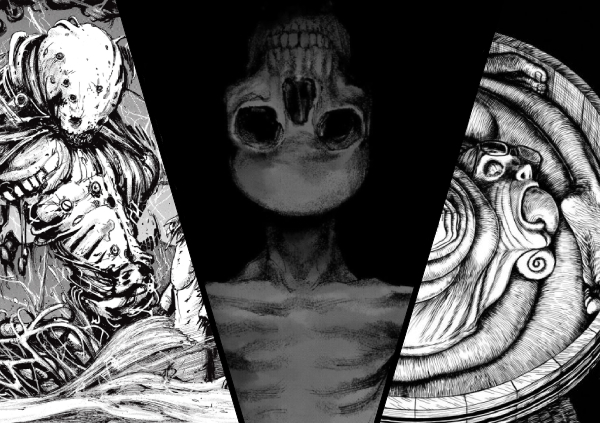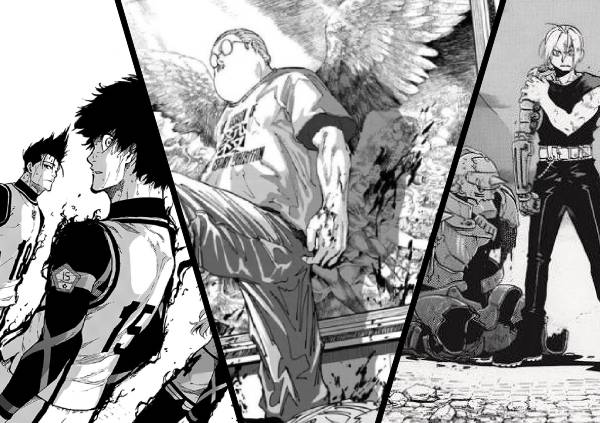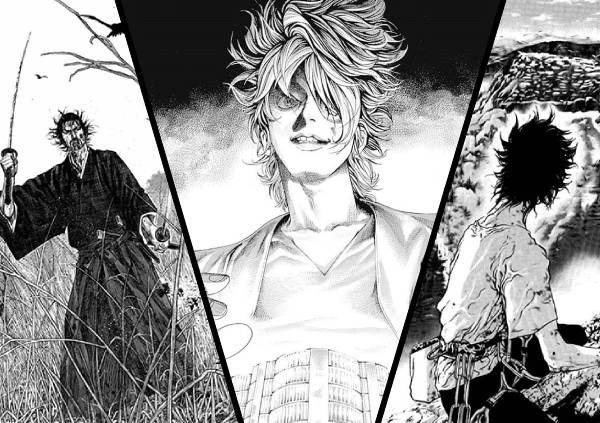Finding new manga to read can be surprisingly difficult, especially when so many popular series are still ongoing or endlessly delayed. That’s why I put together this list of my favorite completed manga. These are stories you can dive into and finish without having to wait for the next chapter.
This list isn’t just a collection of classics, though. It’s a mix of personal favorites that left a lasting impression on me. You’ll find anything from dark psychological thrillers and brutal action sagas to heartfelt slice-of-life dramas and surreal experiments. Some are all-time greats that shaped the medium, while others are hidden gems that deserve far more recognition.
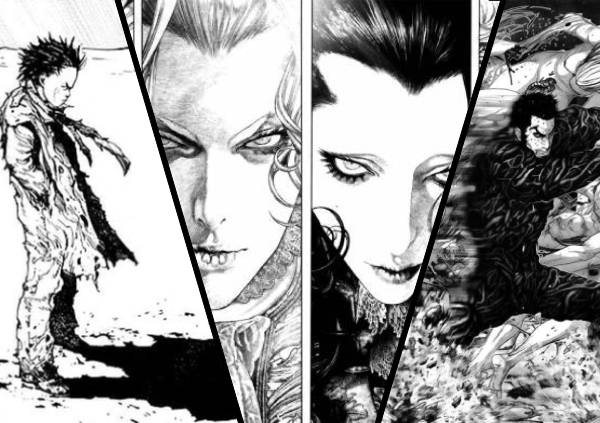
I naturally gravitate toward seinen manga, so the list leans heavily in that direction. If you prefer shonen stories, I recommend you check out my list of the best shonen manga, where you can find high-energy adventures and battle manga.
What all titles here have in common is that they’re completed manga with a clear, satisfying conclusion. Whether you’re drawn to the existential horror of Uzumaki, the gritty realism of I Am a Hero, or the emotional depth of A Silent Voice, you’ll find something unforgettable here.
If you’re tired of cliffhangers and want a manga you can binge from beginning to end, you’re in the right place.
Mild spoiler warning: I’ll try to avoid giving away major story beats, but some plot details are necessary for context.
With that said, here’s my curated list of the 47 best completed manga (last updated: October 2025).
47. Hideout
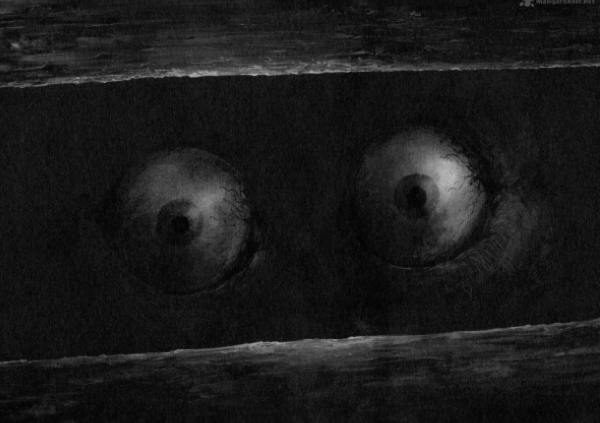
Masasumi Kakizaki’s Hideout is a masterclass in short-form psychological horror. This completed manga proves a story doesn’t need length to leave a lasting impression. Across only nine chapters, it charts a descent into madness that’s brutally tight and claustrophobic.
The story follows Seiichi Kirishima, a failed novelist whose grief and resentment have rotted into something monstrous. On the surface, he’s taking his wife on a healing trip to a remote tropical island after the death of their son. In truth, he’s planning to murder her. When his attempt goes wrong, the nightmare turns literal as both are driven into a labyrinth of underground caves. It’s a sinister place, one that hides something far more dangerous than mere darkness.
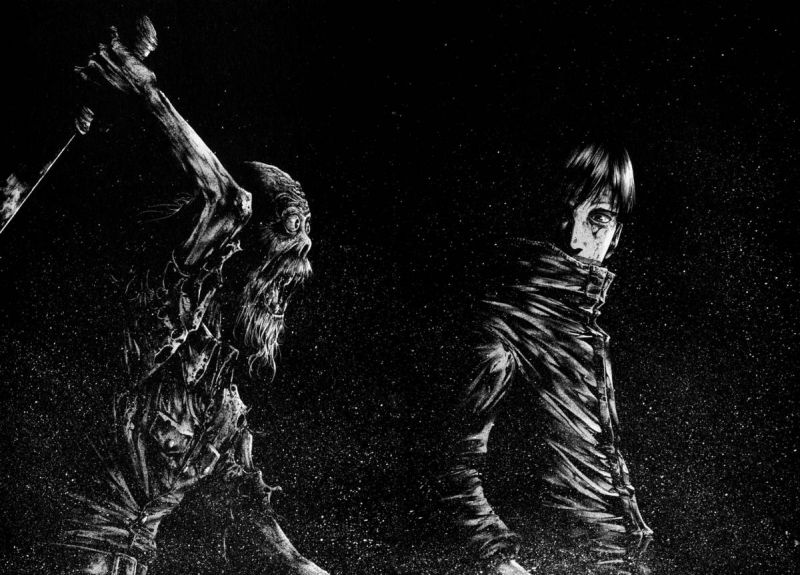
Kakizaki’s art elevates Hideout from good to unforgettable. His obsessive detail and command of shadows make every panel suffocating. The contrast between blinding light and creeping darkness gives the pages a cinematic texture. You can feel the damp air and hear the echo of footsteps in the cave.
Unlike many other horror series that leave threads dangling, Hideout feels perfectly resolved. Its conclusion is twisted, yet strangely fitting. This is not a happy story, but one about the inevitable collapse of a man who’s already lost everything.
It stands as one of the most haunting, self-contained horror stories in the medium, and for readers seeking one of the best completed manga in psychological horror, Hideout is unforgettable.
Genres: Horror, Psychological
Status: Completed (Seinen)
46. Gintama
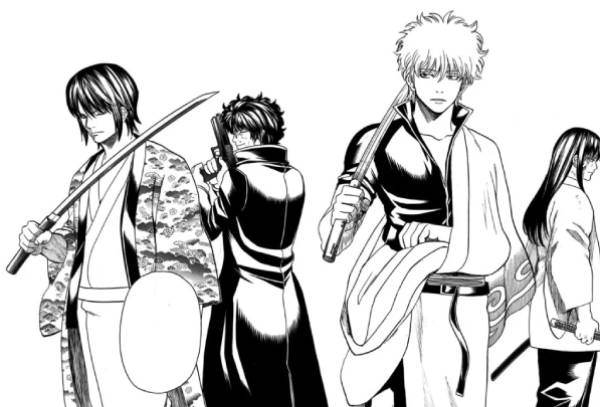
Hideaki Sorachi’s Gintama defies easy classification. It’s a series that can make you laugh, then hit you with the weight of an epic samurai fight moments later. Spanning more than 700 chapters, this completed manga blends slapstick comedy, heartfelt drama, and sharp social satire into something truly unique.
Set in an alternate Edo overrun by alien invaders known as the Amanto, the story follows Gintoki Sakata, a lazy samurai freelancer who runs the Yorozuya business alongside straight-laced Shinpachi, gluttonous alien Kagura, and their oversized dog, Sadaharu. Their daily odd jobs spiral into bizarre escapades involving corrupt officials, alien conspiracies, and some of the most ridiculous situations in manga history.
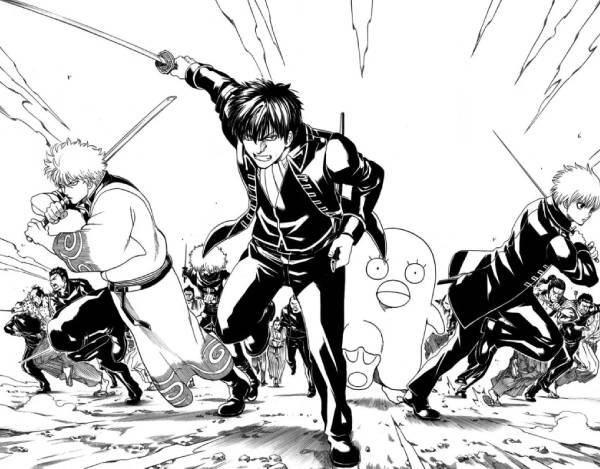
At first glance, Gintama feels like pure parody. It’s a barrage of fourth-wall-breaking comedy that mocks every shonen trope imaginable. But beneath the absurdity lies a deeply emotional pulse. Sorachi balances chaos and poignancy with remarkable precision, turning recurring gags into reflections of friendship, loss, and the passage of time. The later arcs, especially the Shogun Assassination and Shinsengumi arcs, transform the series into a full-blown tragedy without ever losing its sense of humor.
Visually, Sorachi’s art improves steadily throughout the series, pairing exaggerated expressions with fluid cinematic action. His ability to shift from manic comedy to deadly serious sword fights is unmatched.
Gintama leaves behind a lasting impression few other completed manga can match. Hilarious, heartfelt, and deeply human, it stands as a must-read for anyone seeking a blend of parody, tragedy, and samurai epic.
Genres: Comedy, Action, Sci-Fi, Samurai
Status: Completed (Shonen)
45. Demon Slayer
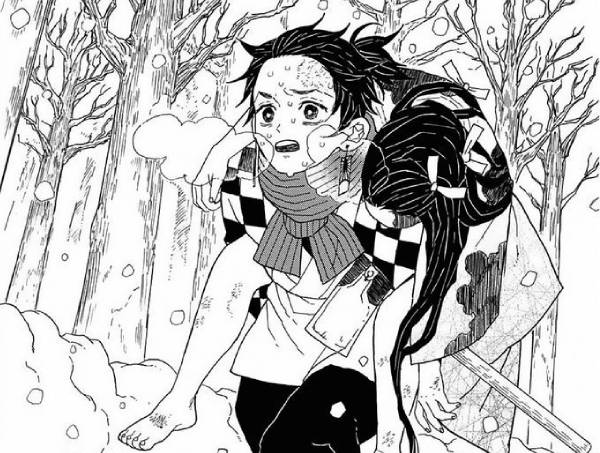
Koyoharu Gotouge’s Demon Slayer: Kimetsu no Yaiba is a rare phenomenon. It’s a breakout debut that became one of the most beloved and best-selling manga in history. What began as a humble shonen about vengeance and family evolved into a cultural phenomenon that blends breathtaking action with heartfelt emotion and striking visual imagination.
The story opens with tragedy. Tanjiro Kamado, a kind-hearted boy from the mountains, returns home to find his family massacred by demons. Only his sister Nezuko survives, but she has been transformed into a demon herself. Driven by love and guilt, Tanjiro joins the Demon Slayer Corps to find a cure and hunt down the monster responsible. What follows is an unrelenting journey of hardship, compassion, and courage that captures the very essence of classic battle manga.
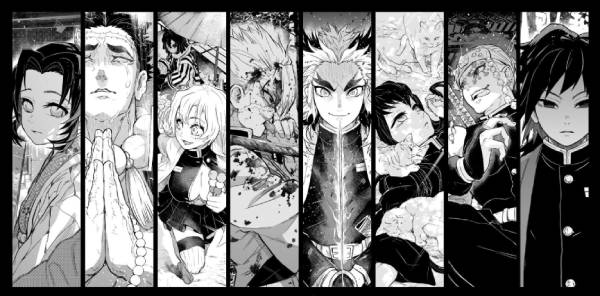
Every confrontation in Demon Slayer feels meaningful. The demons aren’t mere villains, but echoes of broken humanity, and their deaths are steeped in sorrow rather than triumph. Gotouge’s art mirrors this duality. The delicate flow of sword techniques, rendered as vivid elemental arcs, contrasts beautifully with moments of brutality and loss. Even without color, Gotouge’s panels pulse with movement and emotion.
Demon Slayer stands out for its pacing and finality. It never overstays its welcome, and each arc builds naturally toward an emotionally satisfying conclusion. For readers seeking one of the best completed manga that perfectly balances action and heart, Demon Slayer remains a modern classic.
Genres: Action, Fantasy, Dark Adventure
Status: Completed (Shonen)
44. Dragon Head
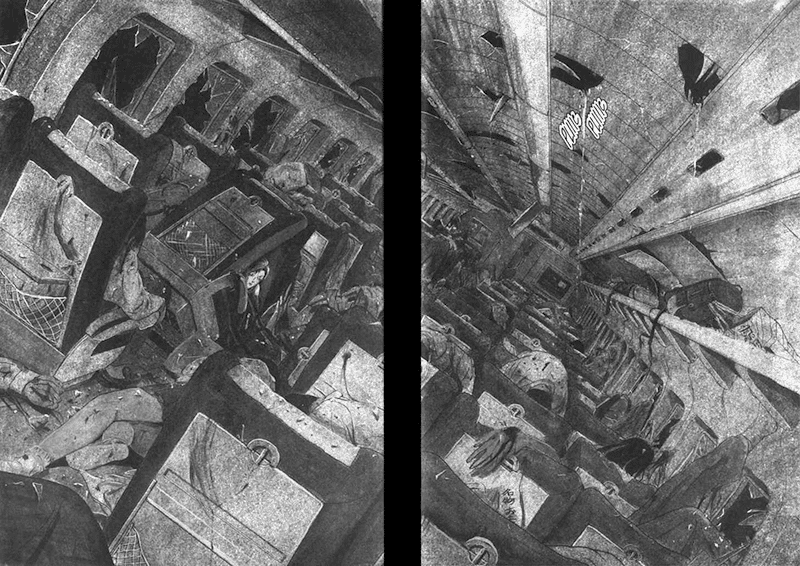
Minetarō Mochizuki’s Dragon Head is a masterpiece of psychological and survival horror. It’s a completed manga that strips away civilization to expose the raw terror of the human mind. Serialized in the late 90s, it begins with an ordinary school trip and ends in a world utterly devastated and bleak.
The story opens with a train crash inside a long mountain tunnel, leaving only three survivors: Teru, Ako, and Nobuo. Trapped in darkness and surrounded by corpses, they face the slow disintegration of both body and sanity. What starts as a claustrophobic survival tale quickly spirals into madness as fear and paranoia consume them. When they finally find a way out, the world above offers no comfort. What they find are scorched cities, silent skies, and the creeping dread that humanity may have already ended.
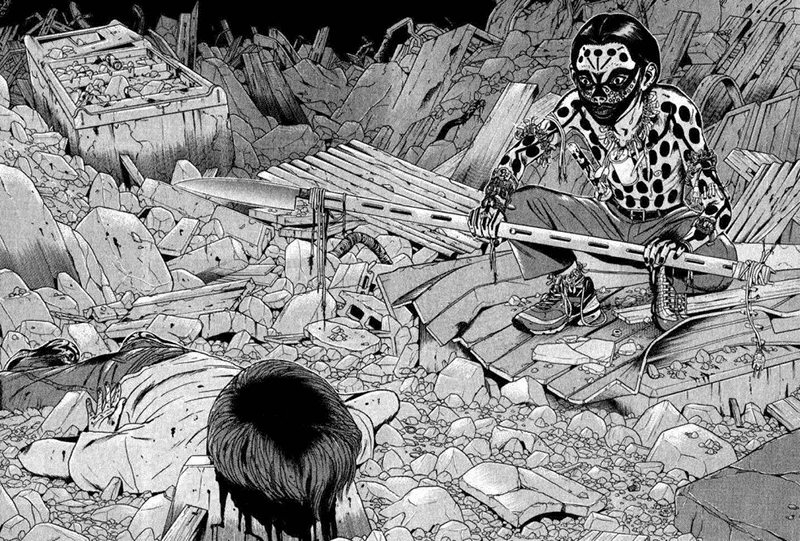
Mochizuki’s artwork is suffocating in the best way. His heavy blacks, trembling lines, and close-up expressions make every page feel oppressive. The atmosphere hums with heat, dust, and psychological decay. The moment Nobuo loses himself to insanity is one of the most haunting portrayals of how fear can twist people beyond recognition.
Unlike most survival manga, Dragon Head offers no answers. There’s only one question: what remains human when everything else collapses? This ending feels final yet uncertain, a fitting close for such an unrelenting descent into despair.
For readers searching for one of the best completed manga in psychological and survival horror, Dragon Head is highly recommended.
Genres: Horror, Psychological, Adventure, Tragedy, Post-Apocalyptic
Status: Completed (Seinen)
43. Pluto

Naoki Urasawa’s Pluto is a rare achievement. It’s a completed manga that reimagines Osamu Tezuka’s Astro Boy and transforms it into a deeply human science-fiction masterpiece. Inspired by Tezuka’s classic story ‘The Greatest Robot on Earth,’ Urasawa creates something entirely of his own: a noir-style thriller where empathy, memory, and morality collide in haunting ways.
Set in a near future where humans and robots coexist, the story begins with the murder of Mont Blanc, a beloved robot hero known for his compassion. His death shocks the world, and Gesicht, a fellow advanced robot and Europol detective, takes on the case. What appears to be a targeted killing soon unfolds into a far more sinister conspiracy.
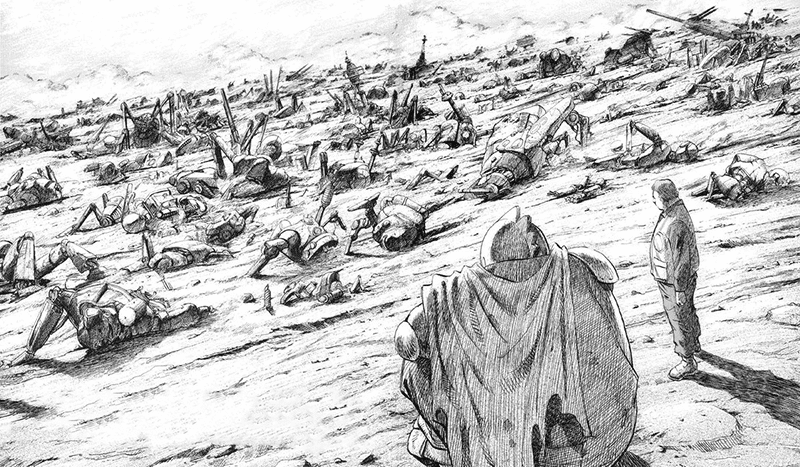
Urasawa’s approach to mystery is meticulous and mature. His pacing builds tension not through spectacle but through silence and emotion. Every conversation carries philosophical weight, questioning what it truly means to be alive. Gesicht himself is one of Urasawa’s most complex creations: a machine capable of love, guilt, and fear, all while trying to uphold justice.
The artwork complements the tone perfectly. It’s grounded, cinematic, and filled with quiet melancholy. Each expression and each shadowed panel feels deliberate, reinforcing the story’s emotional core.
Since it’s a completed manga, Pluto delivers a fully realized and emotionally conclusive story that honors Tezuka’s legacy while standing as a modern classic in its own right. For readers looking for a great science-fiction or mystery manga, this one’s a must-read.
Genres: Mystery, Sci-Fi, Psychological, Drama
Status: Completed (Seinen)
42. Dragon Ball
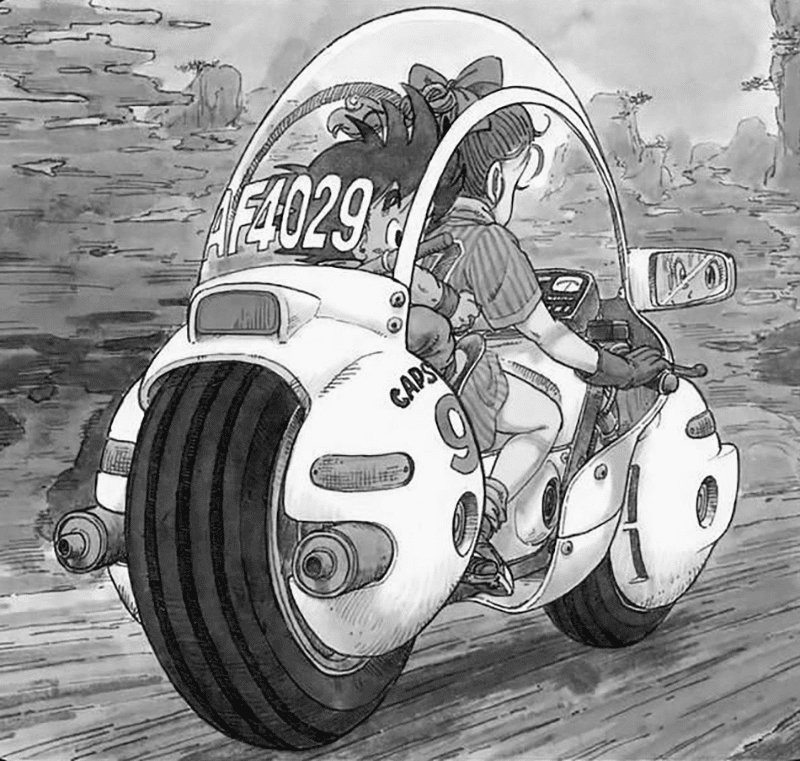
Akira Toriyama’s Dragon Ball isn’t just a classic; it’s the foundation of modern shonen storytelling. First serialized in 1984, it remains one of the most influential works in Japanese pop culture, inspiring generations of artists and readers alike. While later continuations like Dragon Ball Super expand the story, the original run, lasting from Goku’s first adventure to the Buu Saga, stands as a self-contained masterpiece.
At its heart, Dragon Ball is the story of growth. We follow Son Goku from his humble beginnings as a cheerful boy in the wilderness to his rise as the world’s greatest warrior. What starts as a comedic martial arts adventure quickly evolves into an epic saga of aliens, superhumans, and destiny. Toriyama’s pacing, sense of humor, and knack for dynamic action make every arc unforgettable, be it the early World Martial Arts Tournaments or the planet-shattering battles against Freeza, Cell, and Buu.
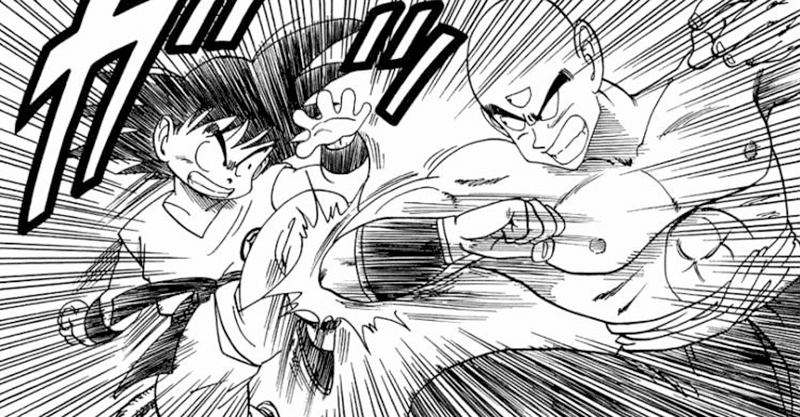
Toriyama’s clean, kinetic art remains unmatched in clarity and motion. Every punch, kick, and energy blast is easy to follow yet packed with impact, making his battles one of the most enjoyable to witness. At the same time, his intricate backgrounds breathe life into the world he built.
Dragon Ball is one of manga’s greatest stories, and witnessing Goku’s long journey is nothing short of amazing. If you want a completed manga that defined the battle shonen genre and continues to inspire countless others, Dragon Ball is more than worth your time.
Genres: Action, Adventure, Martial Arts
Status: Completed (Shonen)
41. To Your Eternity
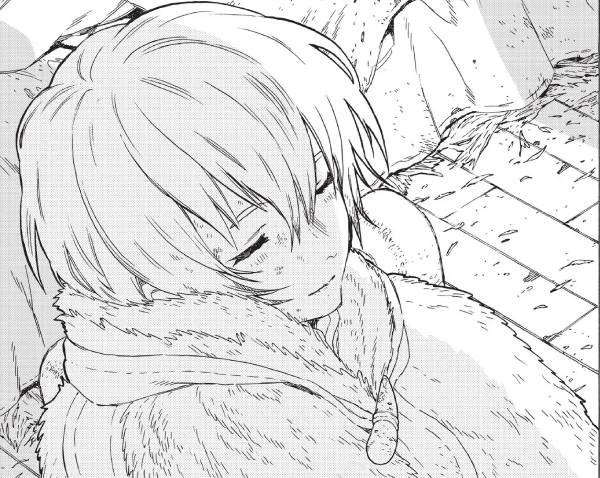
Yoshitoki Ōima’s To Your Eternity is a sprawling, sorrowful, and profoundly human story. It’s a completed manga that stands among the most emotionally resonant works of the past decade, blending fantasy and philosophy into a meditation on life, loss, and what it truly means to exist.
It begins with something simple: an orb cast down on Earth, capable of taking on the form of anything that leaves an impression on it. That shapeless being slowly evolves, first into a rock, then a wolf, and eventually a young boy. This marks the beginning of a centuries-long journey of transformation. Each encounter, every friendship and tragedy, becomes a lesson for Fushi, shaping both his body and soul.
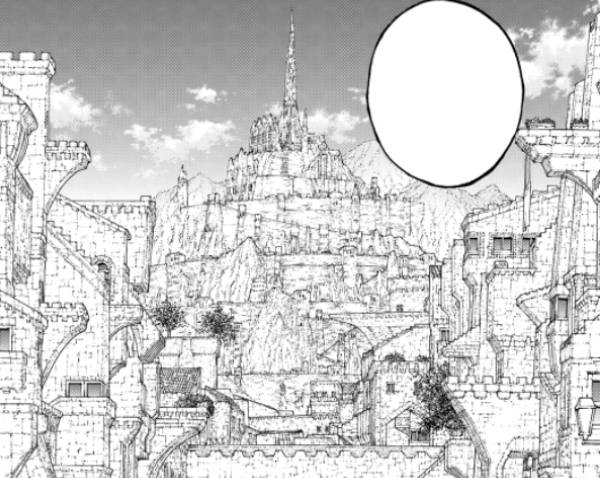
Ōima storytelling carries a rare tenderness. Every character Fushi meets, from March’s innocent hope to Gugu’s unspoken courage, leaves a mark that lingers long after their arcs end. Few manga capture the weight of impermanence so gracefully. Every moment of joy is always shadowed by the inevitability of loss, yet it is never without meaning.
The artwork mirrors the emotional balance. Expansive landscapes capture both loneliness and wonder, while Ōima’s subtle facial expressions and tender character interactions give each encounter its melancholic core.
To Your Eternity eventually reaches a conclusion that’s both powerful and poetic while preserving its sense of mystery and awe. If you’re after a completed manga about love, memory, and the beauty of existence, it’s an unforgettable masterpiece.
Genres: Supernatural, Drama, Tragedy, Fantasy
Status: Completed (Shonen)
40. I Am a Hero
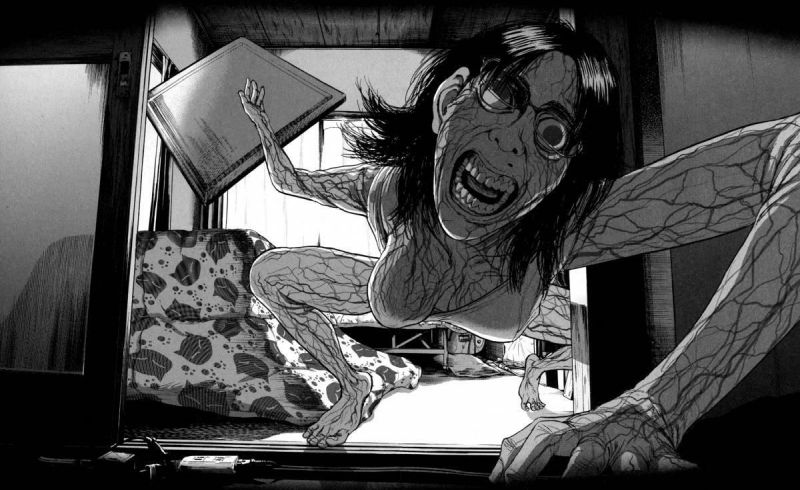
Kengo Hanazawa’s I Am a Hero begins like a quiet slice-of-life story about failure and alienation, but transforms into one of the most chilling and intelligent zombie epics ever drawn. It’s a completed manga that offers a rare mix of psychological realism and apocalyptic horror, taking the familiar zombie formula and twisting it into something disturbingly human.
Hideo Suzuki is not the type of protagonist you’d expect in a story like this. He’s a struggling manga assistant in his thirties, insecure, delusional, and barely able to hold his life together. When a mysterious infection spreads across Japan, transforming people into the living dead, Hideo has to tackle not only his own survival but also his fragile, broken mind plagued by hallucinations.
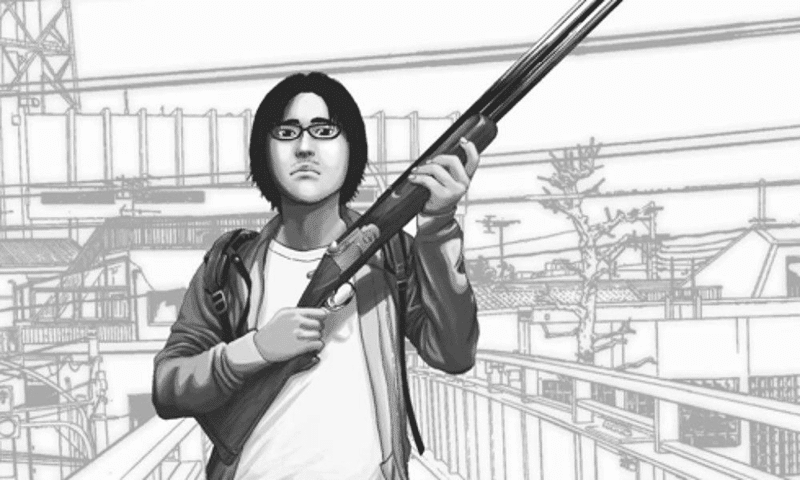
Hanazawa’s art is exceptional, transforming everyday cityscapes into claustrophobic nightmares and haunting ruins of civilization. The infected are depicted with horrifying precision. Their twisted anatomy and fragmented speech often make them more pitiful than monstrous.
What truly sets I Am a Hero apart is its psychological depth. It’s less about the apocalypse itself than about witnessing it from the mind of someone already broken. Even the series’ ending, while controversial and ambiguous, feels thematically right, even if it might leave you unsatisfied.
For anyone searching for one of the best completed horror manga or psychological intimate storytelling, I Am a Hero stands as a masterpiece of paranoia, human fragility, and zombie apocalypse suspense.
Genres: Horror, Thriller, Zombies, Survival, Psychological
Status: Completed (Seinen)
39. Green Blood
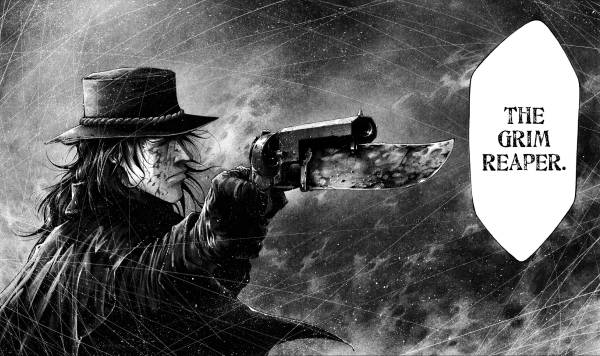
Masasumi Kakizaki’s Green Blood is a grim and haunting vision of 19th-century New York, a time when the city was drowning in filth, violence, and broken dreams. Set in the infamous Five Points district, this manga delivers a tightly constructed tale of brotherhood and revenge that fuses the grit of a Western with the tragedy of classic crime noir.
The story follows two brothers, Brad and Luke Burns, who grow up in the slums. Luke yearns for an escape, while Brad has already surrendered to the city’s darkness. He’s secretly working as the Grim Reaper, a ruthless enforcer for the Grave Digger gang. As their story continues, it evolves into one full of violence, blood and betrayal, as well as brotherhood and the cost of freedom.
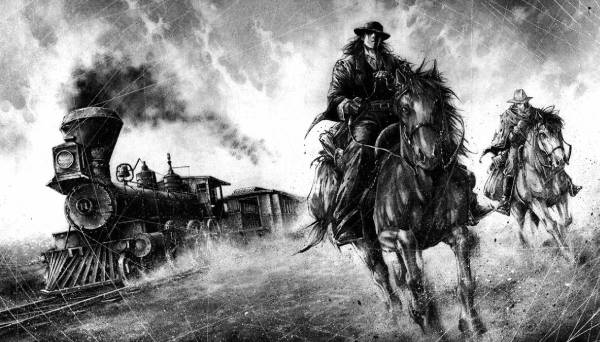
Kakizaki’s artwork is breathtaking in its realism. Every page captures the suffocating atmosphere of the Five Points, thick with soot, sweat, and desperation. Later pages offer breathtaking views of the wide plains of the American Wild West. His action scenes are raw, full of brutal clarity, while the quieter panels, rich in shadow and texture, emphasize the story’s tragic tone.
While Green Blood is a completed manga and offers a satisfying conclusion, its ending arrives sooner than expected. At its heart, it’s a story of two brothers, both shaped by a brutal world, and the choices they make to claim the freedom they dream of. Green Blood is a fantastic choice for readers who seek a unique manga that blends historical grit, stunning visuals, and emotional weight.
Genres: Historical, Action, Crime, Drama
Status: Completed (Seinen)
38. Hellsing

Kouta Hirano’s Hellsing is a spectacle of blood, style, and unrelenting action. It’s a gothic epic that redefined vampire action for an entire generation. While the anime adaptation refines its pacing, the original completed manga is chaos incarnate, unfiltered, unhinged, and wholly self-aware of its excess.
At its core, Hellsing chronicles the endless war between monsters and men. The Hellsing Organization, led by the unflinching Integra Hellsing, fights to protect Britain from supernatural threats. Their greatest weapon is Alucard, an ancient, arrogant vampire who delights in slaughtering anything and anyone foolish enough to challenge him. Alongside his apprentice, Seras Victoria, he faces countless enemies, the most notable being Millennium, an army of Nazi vampires eager to unleash a new world drenched in blood.
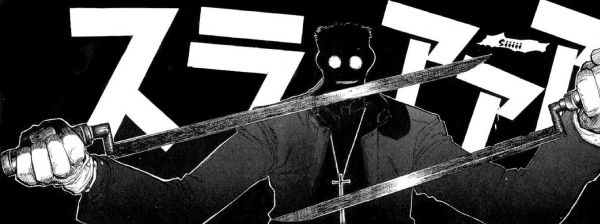
Every page of Hellsing drips with personality. Hirano’s art is bold and heavy with ink, its dynamic linework turning every gunfight and dismemberment into a grim sort of beauty. The dialogue is full of bravado and dark humor, while its cast is full of superhuman madmen like the zealot priest Anderson, and the almost operatic Major.
Hellsing remains one of the best completed manga in the horror genre, perfect if you’re looking for stylish brutality, gothic spectacle, and unhinged characters. It stands as a bloody, glorious classic that still defines the vampire action genre.
Genres: Horror, Action, Supernatural, Vampire
Status: Completed (Seinen)
37. Yu Yu Hakusho
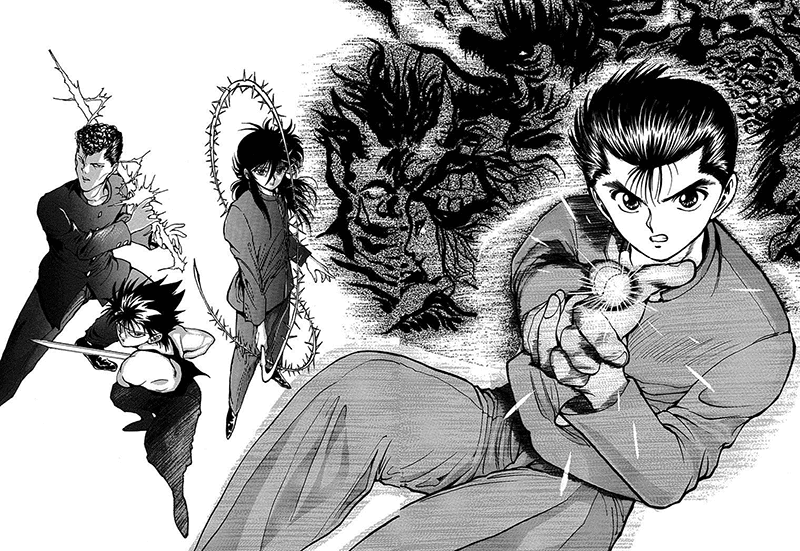
Before Hunter x Hunter cemented Yoshihiro Togashi as a big name in manga history, there was Yu Yu Hakusho. It’s a wild and profoundly influential supernatural adventure that stood apart when most series relied solely on martial arts battles.
The story begins when teenage troublemaker Yusuke Urameshi dies unexpectedly while saving a child’s life. It was an act so surprising that not even the afterlife knows what to do with him. Given a rare second chance, Yusuke returns as a Spirit Detective, investigating crimes that cross between the human and demon realms. What starts as a simple supernatural mystery story soon escalates into high-stakes battles, brutal tournaments, and political intrigue in the underworld.
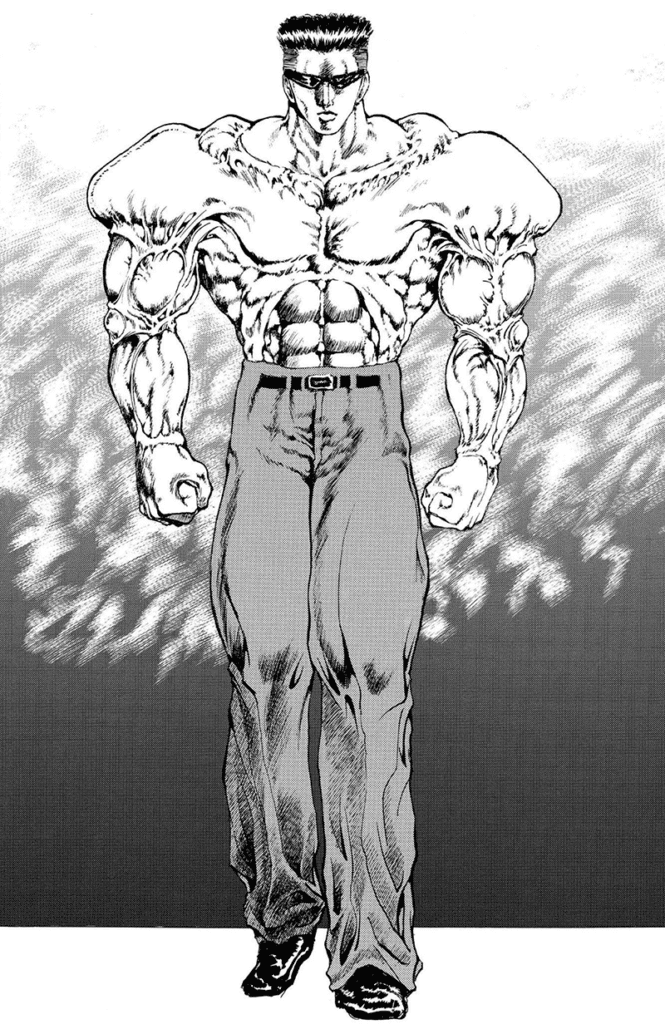
Togashi’s true genius lies in his characters. Yusuke grows from a reckless punk into a deeply human hero, while Kurama, Hiei, and even Kuwabara quickly became fan favorites, each with their own arc and individual personality. Their chemistry is fantastic, and every major battle builds upon their bond.
The Dark Tournament, in particular, remains a gold standard for shonen storytelling. It’s tightly written, emotionally charged, and filled with memorable battles. The clear standout of the arc is Toguro, who remains one of shonen manga’s most fantastic and layered antagonists.
While its conclusion seems cut short, Yu Yu Hakusho remains one of the best completed manga in shonen history. It endures not only for its humor and action, but for its unforgettable battles, enduring characters, and emotional resonance.
Genres: Supernatural, Action, Fantasy
Status: Completed (Shonen)
36. Dead Dead Demon’s Dededede Destruction
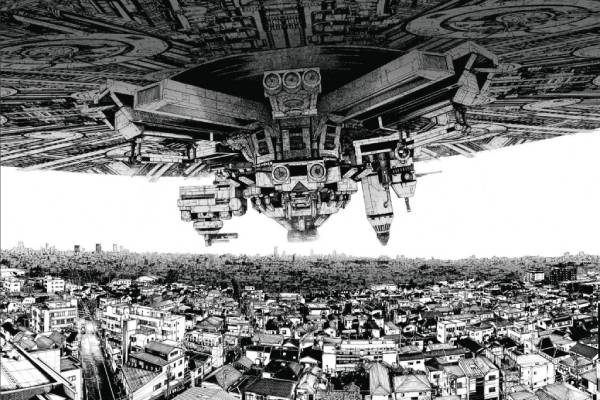
Inio Asano’s Dead Dead Demon’s Dededede Destruction begins like a slice-of-life story about two ordinary high school girls before transforming into one of the most ambiguous science-fiction manga of the 2010s. As a completed manga, it stands as Asano’s strangest and most daring achievement yet.
Set in a near-future Tokyo overshadowed by a massive alien mothership, the series follows Kadode and Ouran as they drift through everyday life. We watch them gossip, late-night argue, and daydream, while the world is overshadowed by the unknown. For long parts of the story, the invasion is nothing but background noise, absorbed by the monotony of ordinary life. Asano uses this absurd premise to dissect how people normalize danger and turn it into routine.
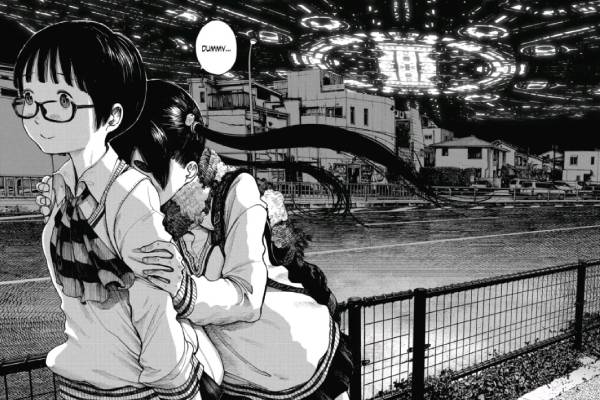
As the story progresses, its tone fractures. What begins as slice-of-life drama becomes full-blown science-fiction as the manga introduces high-concept ideas that warp the manga into something entirely different. While the tonal whiplash feels deliberate, the sheer audacity of the ideas can make it hard to endure the change.
Visually, Asano remains unmatched. His blend of hyperrealistic backgrounds and almost caricatured characters gives the manga an uncanny texture that feels part comedic, part unsettling.
By its final chapter, Dead Dead Demon’s Dededede Destruction ties its chaos together in a way that feels complete but also quite confusing and ambiguous, leaving more questions open than answered. Some will hate it, others will love it, but all will agree: the journey there is unforgettable.
Genres: Slice-of-Life, Sci-Fi, Drama
Status: Completed (Seinen)
35. Tokyo Ghoul
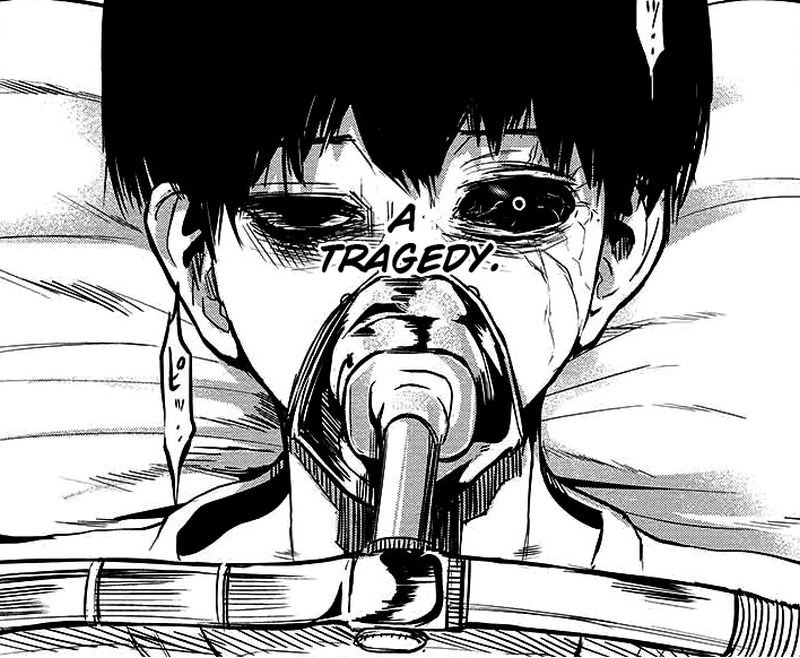
Sui Ishida’s Tokyo Ghoul is a dark, tragic masterpiece. It’s a story that mixes visceral horror with raw emotion and identity crises. It tells a haunting, fully realized story about transformation, alienation, and the fragile line between man and monster. It’s one of the most influential manga series of the 2010s, and even now, few stories can rival its mix of beautiful visuals and raw brutality.
The manga opens with Ken Kaneki, an ordinary bookish student whose life changes forever after a date gone wrong. After surviving a ghoul attack through an emergency organ transplant, he wakes up no longer fully human. Forced to walk the hidden world of ghouls and the relentless investigators of the CCG, Kaneki has to fight to keep his humanity.
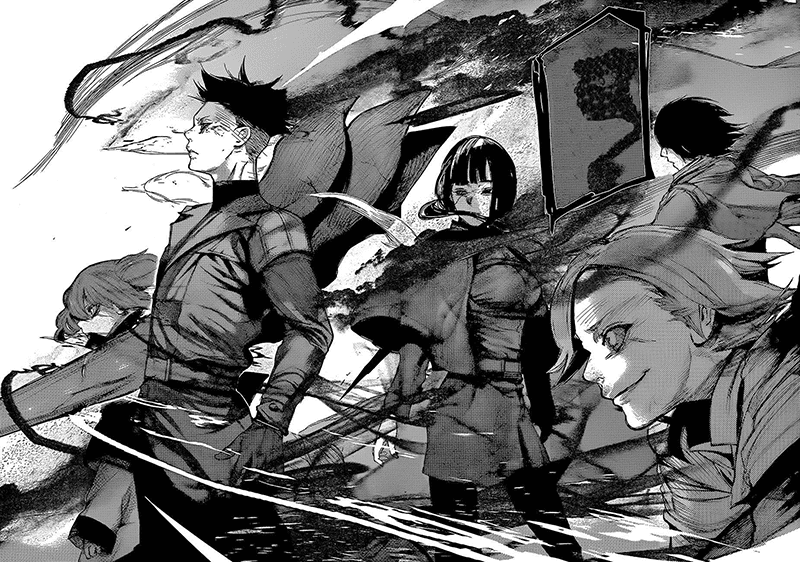
Ishida’s Tokyo may be divided between hunters and the hunted, but its morality is anything but clear-cut. The ghouls who fight to survive are capable of deep love and sorrow, while human investigators often commit acts of cruelty and savagery. This ambiguity gives the manga its haunting realism, and many of the supporting cast, be it Touka, Amon, or Arima, feel shaped by their own inner demons.
Artistically, Ishida’s work is mesmerizing. His art evolves dramatically, blending fluid, sometimes chaotic battles with haunting emotional details.
Through its sequel, Tokyo Ghoul:re, the story comes to a definite, but controversial conclusion. Some find it powerful, while others find it unsatisfying. Even with its divisive ending, Tokyo Ghoul remains one of the best completed manga for readers who enjoy dark fantasy and stylish battles.
Genres: Horror, Action, Psychological, Tragedy
Status: Completed (Seinen)
34. Attack on Titan
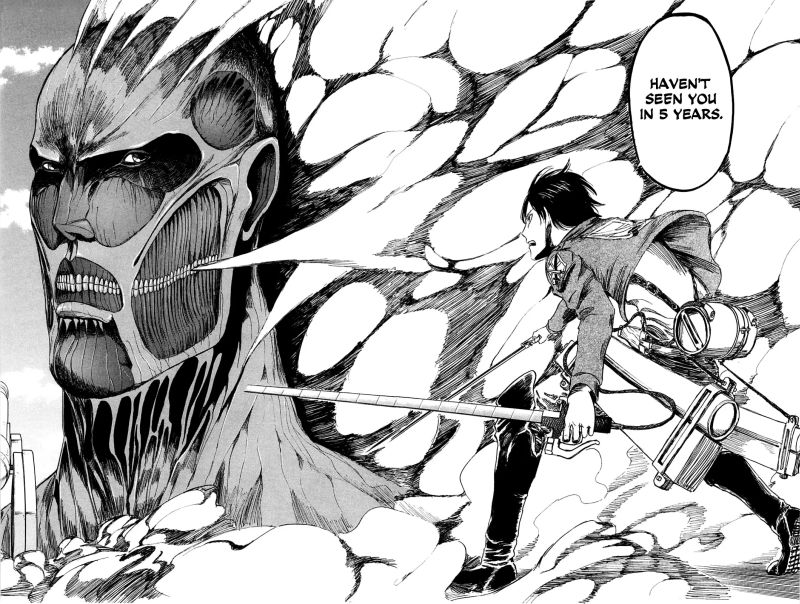
Hajime Isayama’s Attack on Titan began as a grim survival thriller and evolved into one of the most monumental sagas in modern manga. Now that it’s completed, it stands as both a cultural landmark and one of manga’s boldest creative experiments. It’s a story that fuses horror, politics, and tragedy into a single vision.
Set in a world where the last remnants of humanity live trapped behind enormous walls, the series opens with a sudden terrifying event. When a giant titan breaches the outer barrier, young Eren Yeager witnesses his mother’s death and vows to annihilate every one of these monsters. Alongside his friends Mikasa and Armin, he joins the Survey Corps, only to uncover truths far more terrifying than the titans themselves.
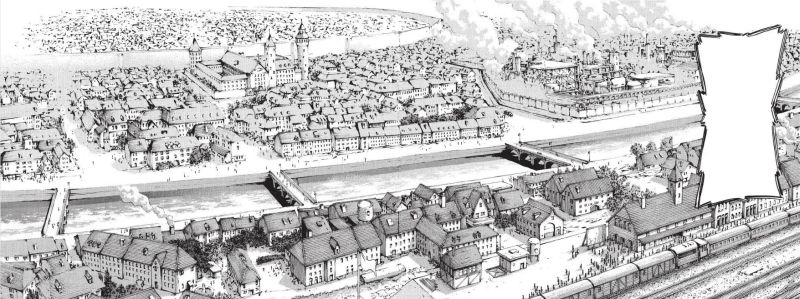
What starts as claustrophobic horror transforms into a sprawling political allegory. Nations clash, ideologies crumble, and Eren’s crusade for freedom twists into something monstrous. Isayama’s storytelling expands without losing focus, pushing shonen conventions into darker, more philosophical territory.
The artwork matures alongside the narrative, evolving from raw and unrefined into a cinematic spectacle. The vertical maneuvering battles remain among the most visually thrilling sequences in manga, balancing chaos and control in perfect measure.
Its finale may have divided fans, but that controversy remains part of its legacy. As a completed manga, Attack on Titan endures as a story of freedom, violence, and the endless cycles of hatred that define human history.
Genres: Dark Fantasy, Action, Mystery, Post-Apocalyptic
Status: Completed (Shonen)
33. Claymore
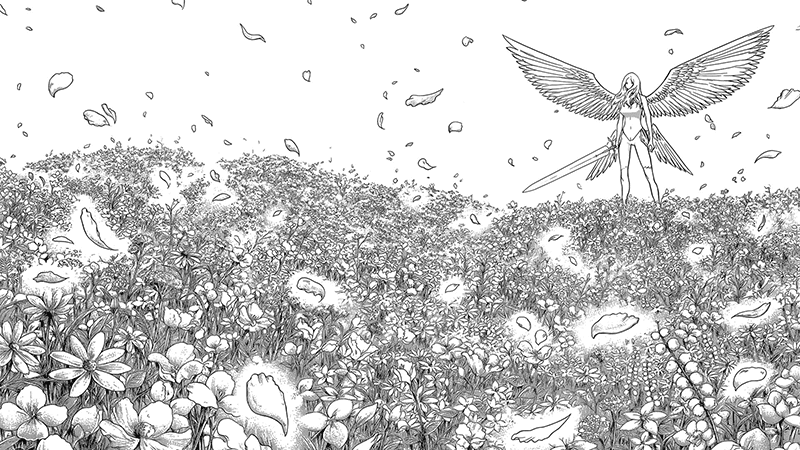
Norihiro Yagi’s Claymore is a dark fantasy story that blends elegance, brutality and emotional depth in perfect balance. As a completed manga, it delivers a fully realized revenge saga, standing amongst the most haunting shonen series of its generation.
Set in a medieval world crawling with shape-shifting demons called Yoma, the story follows Clare, a young warrior. She belongs to a secretive organization that creates Claymores, half-Yoma women who hunt these beasts while fighting the corruption within themselves. Clare’s journey begins as a solitary quest for revenge against the monstrous Priscilla, but evolves into something far greater: a rebellion against fate, power, and the cruel system that forged her.
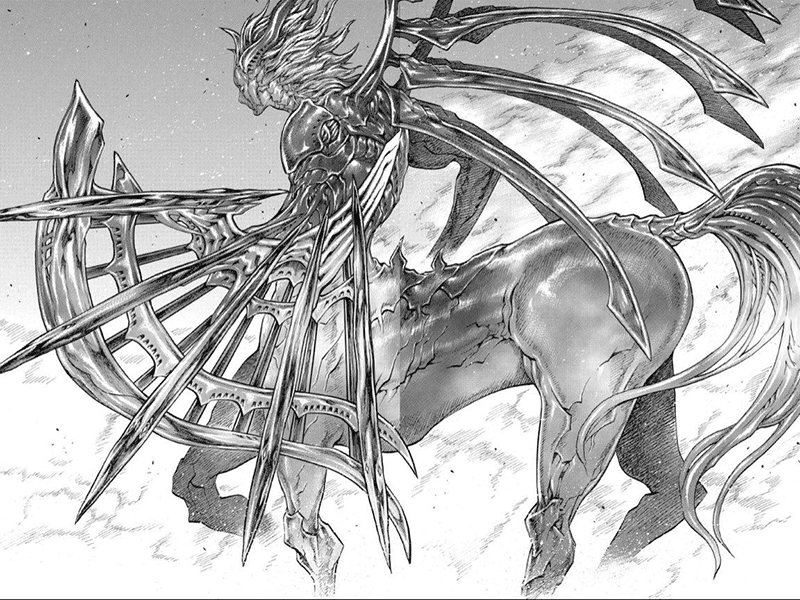
What starts as episodic monster-hunting grows into a sweeping epic filled with betrayal, sacrifice, and shifting alliances. Each arc deepens the world’s mythology while pushing Clare ever-closer to losing her humanity. Yagi’s pacing is slow but deliberate, giving every revelation the weight it deserves.
Visually, Claymore is breathtaking. The character design balances grace and ferocity, while the Awakened Beings rank among manga’s most haunting creations: grotesque, alien, and mesmerizing. Yagi’s use of negative space and cinematic angles often creates a sense of isolation that perfectly mirrors the story’s tone.
Its final revelations may divide fans, but its sense of finality is undeniable. If you’re looking for an outstanding dark-fantasy manga, Claymore is a must-read.
Genres: Dark Fantasy, Action, Supernatural
Status: Completed (Shonen)
32. My Dearest Self With Malice Aforethought
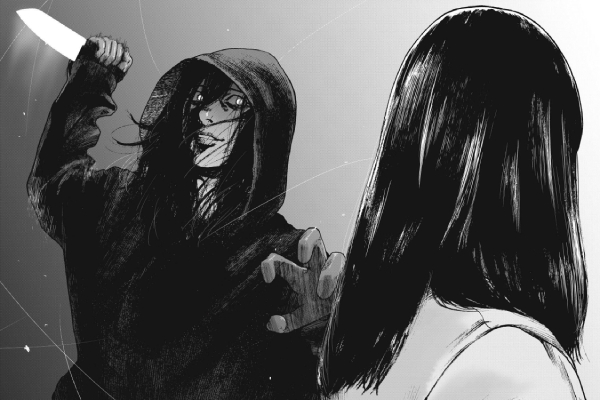
Hajime Inoryu and Shota Ito’s My Dearest Self With Malice Aforethought is a slow-burn psychological thriller that turns memory, trust, and self-perception into a weapon. Since it’s a completed manga, it offers a full, twisting story that keeps readers second-guessing until the final chapter.
The series opens with Eiji Urashima, a quiet, unremarkable college student who wakes up to a life he doesn’t recognize. There’s a girlfriend he’s never met, conversations he doesn’t recall, and a blank space in his memory that keeps widening. His search for answers begins like a straightforward case of amnesia, but quickly evolves into a nightmare full of deceit, murder, and conspiracies.
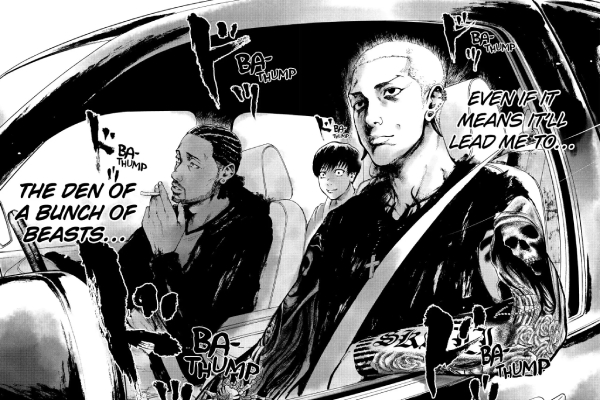
The writing is razor-sharp. Even as the constant twists threaten to overwhelm, every new revelation lands logically, and shifts our understanding of the story. Throughout the first half, the tension never lets up, and each new chapter adds another layer, another question that deepens the mystery rather than resolving it. By the time the story nears its conclusion, it slows down, but once the final pieces fall into place, the payoff is deeply satisfying.
Shota Ito’s clean, grounded art style enhances the psychological edge. His subtle expressions and body language carry as much meaning as the dialogue, giving even quiet moments a feeling of unease.
My Dearest Self With Malice Aforethought is a tightly woven, fast-paced thriller that will keep you on the edge of your seat from start to finish. For fans of psychological manga packed with tension and twists, it’s one of the best completed works of its kind.
Genres: Psychological, Thriller, Mystery, Drama
Status: Completed (Seinen)
31. MPD Psycho
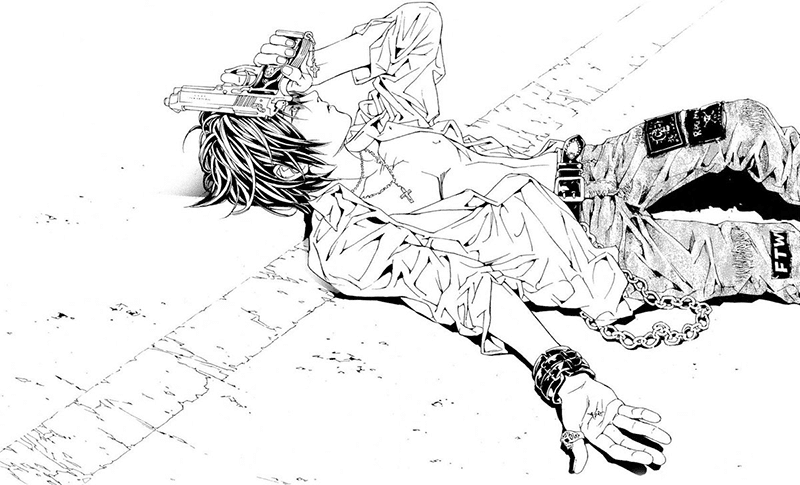
Eiji Ōtsuka and Shou Tajima’s MPD Psycho isn’t just a crime manga, but an autopsy of the human mind. This completed manga leads readers through a labyrinth of serial killers, conspiracies, and fractured identities, blurring the boundaries between detective fiction, horror, and philosophy. Even now, it remains one of the boldest and most disturbing achievements in the seinen genre.
At its core is Kazuhiko Amamiya, a detective with multiple personalities. The manga starts out episodically, following a series of grotesque and disturbing murders. Over time, the story expands into a sprawling web of psychological experiments, cult machinations, and manipulation. Every seemingly unrelated crime scene, we soon realize, is part of a larger, incomprehensible puzzle.
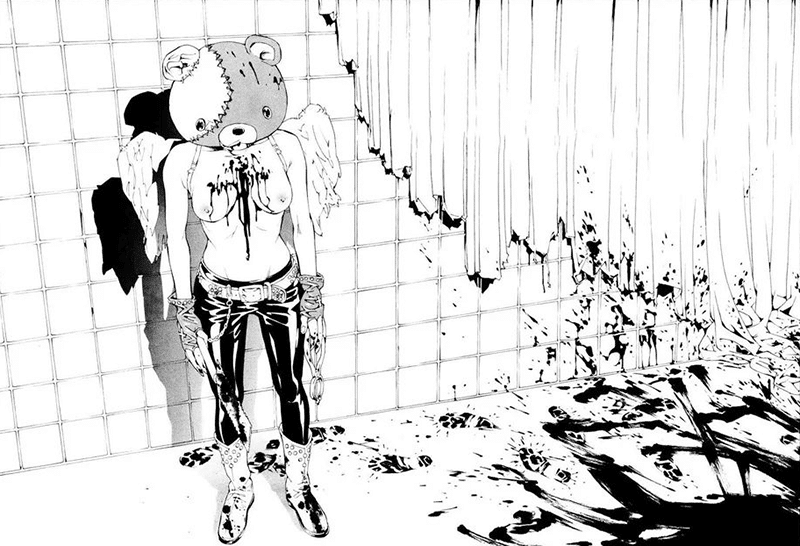
Tajima’s artwork amplifies that unease with surgical precision. The sterile settings, dissected bodies, and coldly symmetrical panels create an atmosphere that feels both scientific and nightmarish. The violence is shocking, but never aimless, and every image feels constructed to make the reader uncomfortable in the best way possible.
What makes MPD Psycho so unforgettable is its refusal to simplify. The narration mirrors Amamiya’s fractured psyche, intentionally disorienting the reader to reflect its themes of identity and control.
MPD Psycho stands as one of the most ambitious completed manga in psychological horror. It’s a disturbing masterpiece that ends with the same cryptic brilliance it began.
Genres: Horror, Psychological, Mystery, Crime, Thriller
Status: Completed (Seinen)
30. Battle Angel Alita
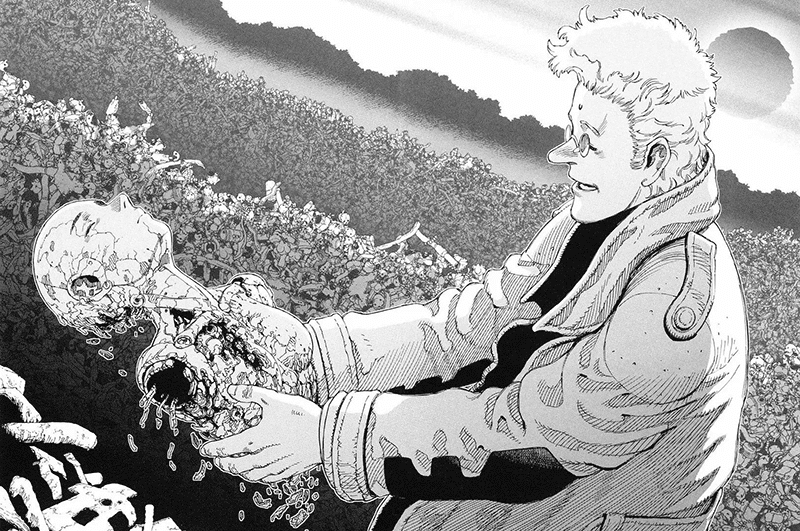
Yukito Kishiro’s Battle Angel Alita is a landmark of cyberpunk storytelling. It’s a violent yet deeply human odyssey that still resonates today. While Alita’s story is still ongoing today and currently in its third installment, I only want to focus on the first part, which was completed in 2005. It’s one of the most cohesive and emotionally charged journeys in science-fiction, balancing explosive action with philosophical depth and character development.
Set in the sprawling, destitute city known as Scrapyard, the series begins when cybernetic doctor Daisuke Ido discovers the remnants of a young android girl in a pile of discarded metal. He rebuilds her and names her Alita. As she searches for both her origins and her purpose, she becomes something between savior and a weapon.

Kishiro crafts a universe that feels both savage and beautiful. The chaos of the Scrapyard, towers of junk, desperate scavengers, and cybernetic bounty hunters, contrasts with Zalem, the pristine floating city above, a haunting symbol of class divide and technological arrogance. The series’ action sequences are nothing short of breathtaking, with the Motorball arc standing out as a kinetic masterpiece full of violence and stunning battle choreography.
Yet it’s Alita herself who anchors the story. Her evolution from lost girl to self-aware warrior gives the manga its soul. It makes it a testament to identity, resilience, and the fragility of humanity.
Battle Angel Alita remains one of the best completed manga ever written. It’s a raw cyberpunk science-fiction epic: visionary and unforgettable. Those who want more can continue the saga in Battle Angel Alita: Last Order, and Battle Angel Alita: Mars Chronicles.
Genres: Cyberpunk, Sci-Fi, Action
Status: Completed (Seinen)
29. Onani Master Kurosawa
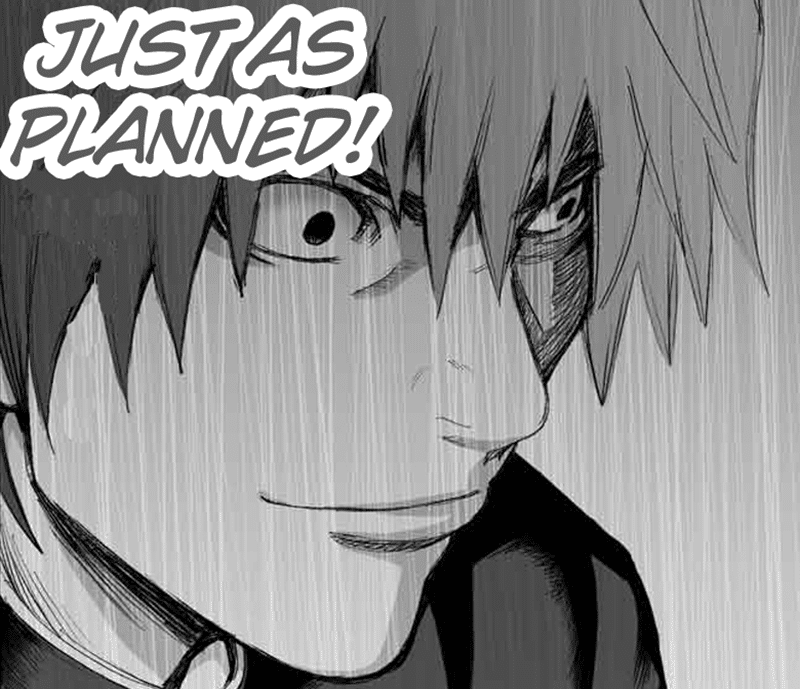
Katsura Ise and Takuma Yokota’s Onani Master Kurosawa (literally Masturbation Master Kurosawa) begins as a crude comedy and ends as one of the most heartfelt coming-of-age stories in modern manga. What starts as crude and juvenile gradually transforms into a brutally honest portrayal of adolescence, guilt and redemption. Since it’s a completed manga, it delivers one of the most satisfying emotional arcs and is proof that a great story can bloom from the strangest premises.
Kakeru Kurosawa is a reclusive middle school student who spends his days detached from the world around him, finding solace in a secret and shameful habit. When he witnesses a classmate being bullied, he uses his private ritual as a twisted way to take revenge. The setup feels absurd, almost satirical at first, but the story soon dismantles every expectation.
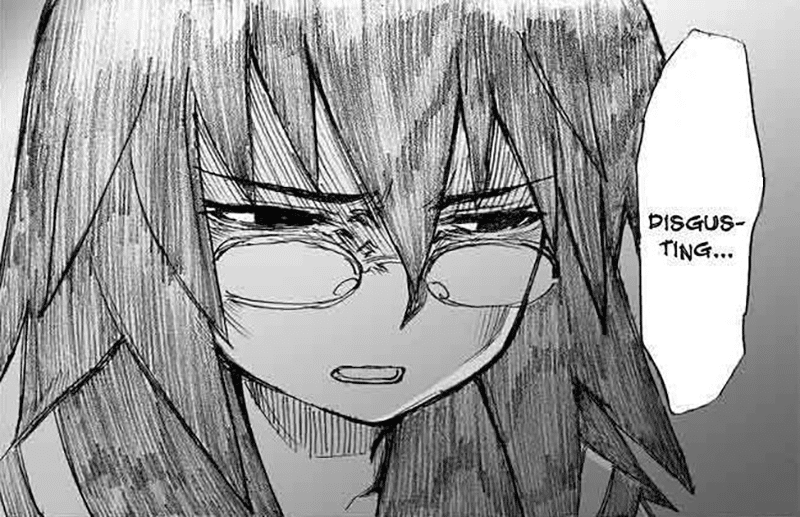
The story gradually shifts from dark humor to emotional introspection. Kurosawa’s early edge slowly gets replaced by remorse and real connections. It’s a rare manga that faces adolescent shame head-on, stripping away the irony to reveal something deeply human underneath. The tone grows warmer and more reflective with each chapter, leading to a quiet but powerful final scene.
Yokota’s rough, hand-drawn art perfectly complements that vulnerability. The sketch-like style feels personal and unfiltered, mirroring the raw emotional honesty of the writing.
By the end, Onani Master Kurosawa stands as one of the best completed manga about growing up: awkward, uncomfortable, and ultimately redemptive. It’s a coming-of-age story that earns every ounce of its sincerity.
Genres: Drama, Psychological, Coming-of-Age
Status: Completed (Seinen)
28. Shigurui
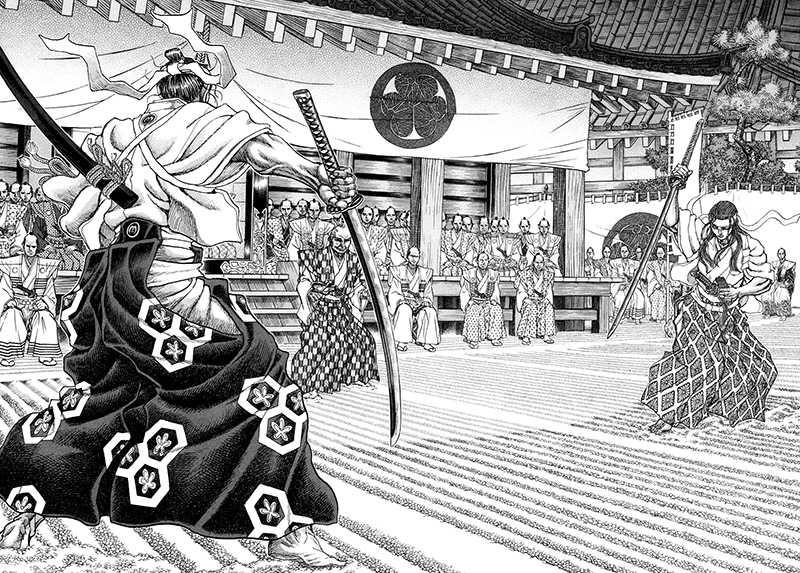
Few manga capture the cruelty and discipline of feudal Japan with the same precision and horror as Shigurui. Written by Norio Nanjō and illustrated by Takayuki Yamaguchi, this completed manga strips away the myth of the noble samurai, revealing a world ruled by ego, obsession, and blood. It’s one of the most harrowing depictions of martial honor ever drawn and a manga that dances between beauty and brutality.
Set during the Edo period, the tale opens with a grotesque tournament organized by daimyo Tadanaga Tokugawa, where warriors must fight using real swords instead of practice blades. The first match introduces two broken men: Gennosuke Fujiki, missing an arm, and Seigen Irako, blind and lame. Through flashbacks, their violent rivalry unfolds into a descent of betrayal, pride, and madness born from the system that shaped them.
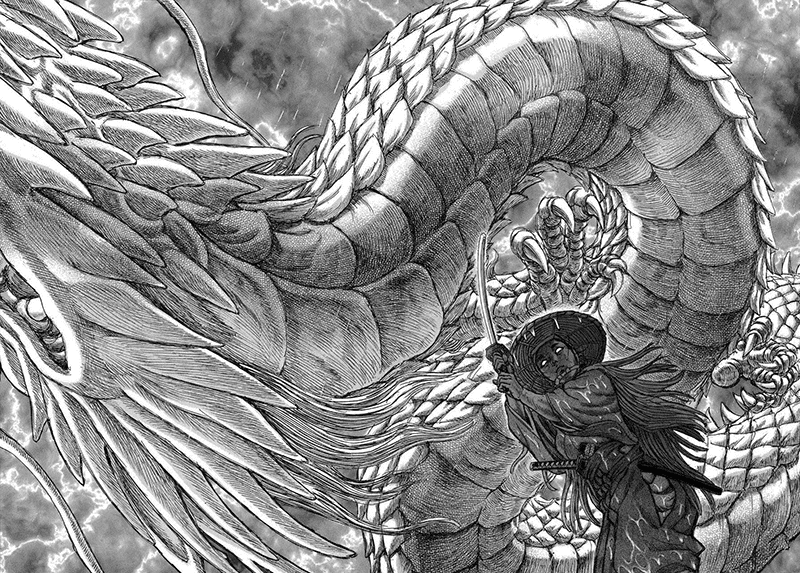
Yamaguchi’s art is staggering in its detail. Every sword swing, drop of blood, and ripple of cloth is rendered with almost painful realism. The duels are intimate, surgical, and horrifyingly beautiful. But beneath the spectacle lies something far darker: a critique of samurai ideology itself. Honor, discipline, and obedience are shown not as virtues, but as tools of dehumanization. The women trapped within this hierarchy, Lady Iku and Mie, suffer equally, treated as possessions and tools rather than people.
Though the story ends before adapting more than the first chapter of its source novel, the conclusion feels hauntingly final. It’s a grim presentation of the cost of devotion and the emptiness behind the warrior’s code.
Shigurui remains one of the best completed samurai manga ever drawn: elegant, merciless, and unforgettable.
Genres: Action, Historical, Drama, Tragedy, Martial Arts
Status: Completed (Seinen)
27. A Silent Voice
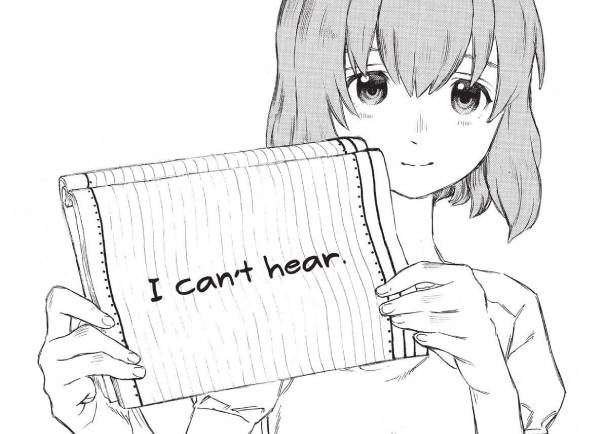
Yoshitoki Ōima’s A Silent Voice is a manga that treats adolescence not as innocence, but as a crucible of cruelty, guilt, and slow painful growth toward redemption. This completed manga offers a full, deeply emotional story that begins painfully and ends in quiet grace.
The story opens with Shouya Ishida, an energetic elementary schooler whose restlessness curdles into cruelty when a deaf girl, Shouko Nishimiya, joins his class. What starts as childish teasing becomes relentless bullying, escalating until Shouko is forced to transfer schools. The fallout is immediate. Shouya becomes the new outcast, branded by his peers as the sole villain.
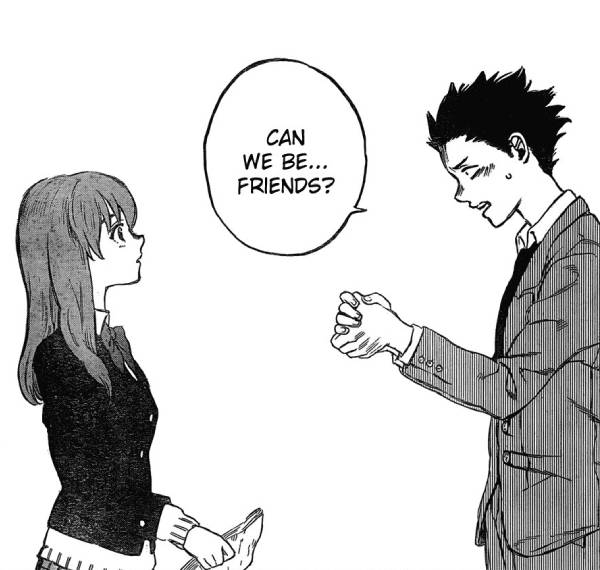
Years later, a guilt-ridden teenage Shouya lives in isolation, but eventually seeks forgiveness from the person he once tormented. From there, A Silent Voice transforms into an unflinching story about self-hatred, reconciliation, and the fragile hope of making things right. The emotional honesty of Ōima’s writing is remarkable. Redemption isn’t granted easily; and both Shouya and Shouko must learn to forgive themselves before they can forgive each other.
The artwork complements the tone perfectly. Ōima’s clean, expressive style captures the nuances of body language and silence, making communication itself feel sacred.
By its end, A Silent Voice achieves a rare sense of emotional completeness. Tender, painful, and unforgettable, it’s one of the best completed manga ever written about empathy and second chances.
Genres: Drama, Romance, Slice-of-Life, Psychological
Status: Completed (Shonen)
26. Fist of the North Star
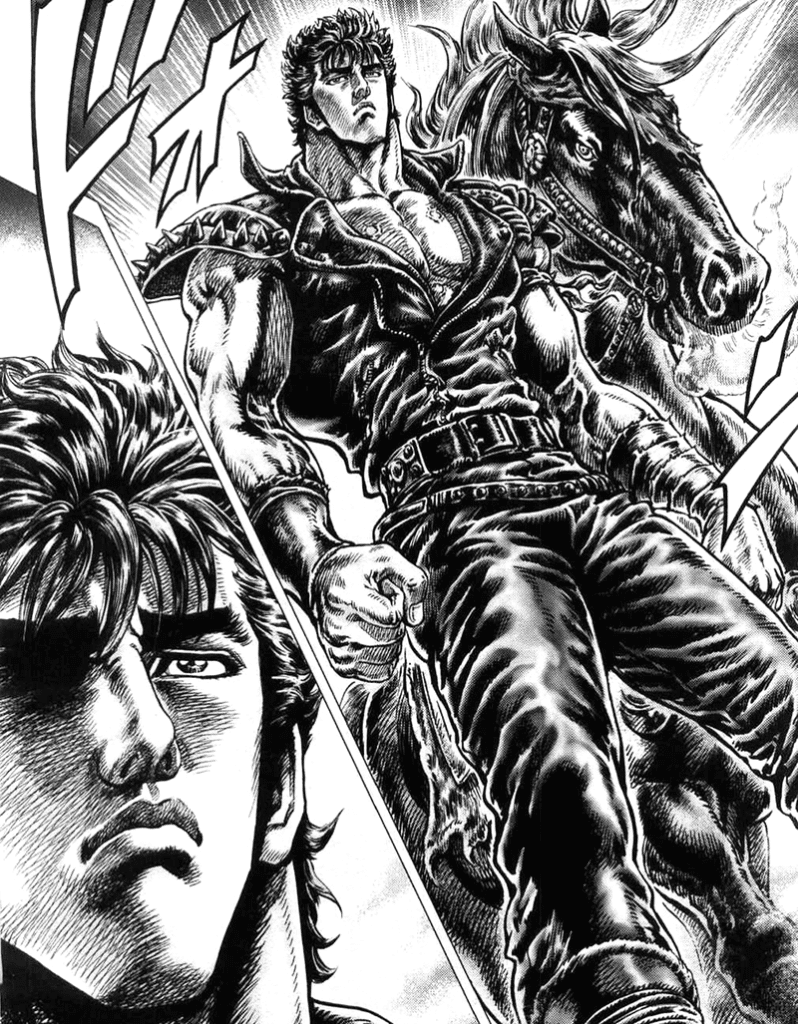
Buronson and Tetsuo Hara’s Fist of the North Star is a monument to 1980s manga: a grand, blood-soaked epic of fists, honor, and redemption that defined modern shonen. It stands tall as one of the most iconic action manga ever created, blending post-apocalyptic grit with mythic emotion in a way that still feels unmatched.
Set in a post-nuclear wasteland where civilization has crumbled, the series follows Kenshirou, successor of the deadly martial art Hokuto Shinken. With a single touch, he can make his enemies’ bodies implode, doing so with stoic precision. Wandering the deserts, Kenshirou becomes a savior of the oppressed and a destroyer of tyrants, carving a path through chaos, uttering his iconic line: “You’re already dead.”
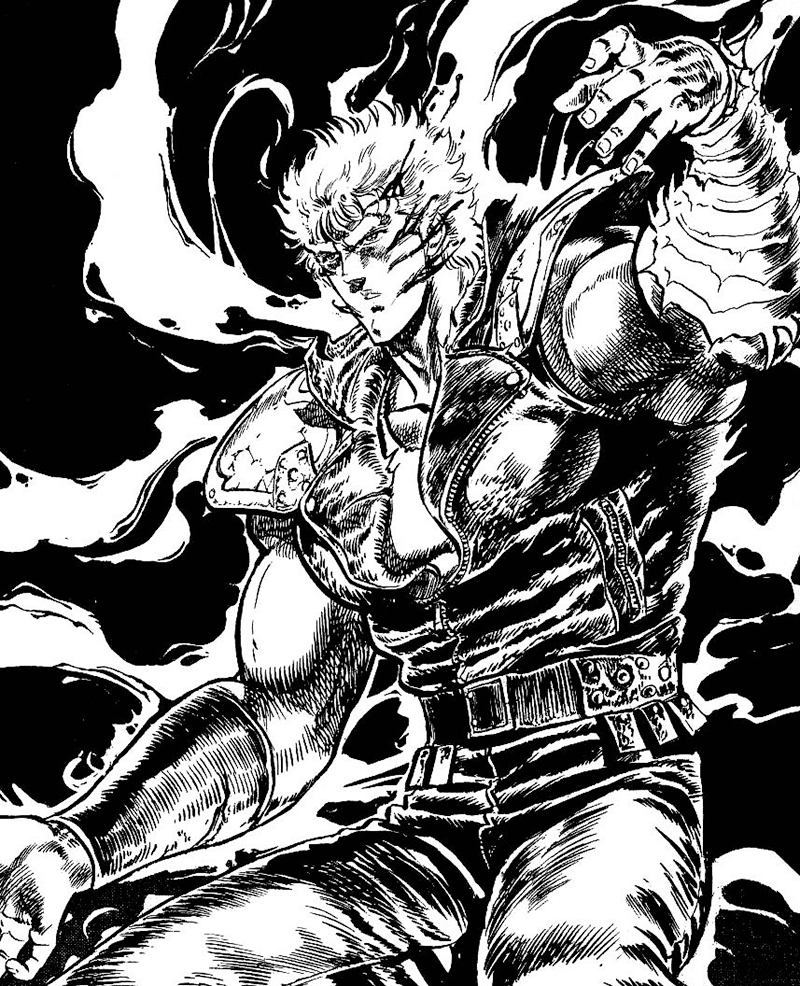
Yet beneath this brutality lies tragedy. Kenshirou is less a power fantasy than a symbol of endurance. He’s a warrior carrying the burden of compassion in a world where kindness is weakness. Every rival, from the noble Rei to the godlike Raoh, offers a different answer to the same question: how does one live with strength in a dying world?
Hara’s artwork radiates pure power. Muscular anatomy, explosive motion, and cinematic paneling turn every battle into high drama. The violence is extreme, but always stylized, reflecting the story’s fatalistic grandeur.
Even decades later, Fist of the North Star remains one of the best completed manga for everyone who loves classic action about manly men doing manly things and shedding manly tears.
Genres: Action, Martial Arts, Post-Apocalyptic
Status: Completed (Shonen)
25. Blood on the Tracks
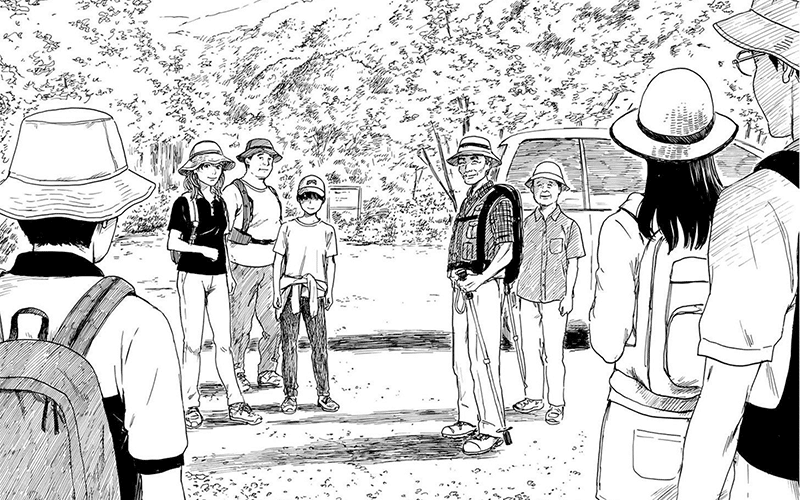
Shūzō Oshimi’s Blood on the Tracks isn’t a story you simply read, but one you endure. This completed manga crawls under your skin, transforming everyday domestic scenes into studies of fear, guilt, and emotional suffocation. By the time it ends, it feels less like a thriller and more like surviving a deeply psychological nightmare.
At the center is Seiichi Osabe, a boy whose entire world is dominated by his mother, Seiko. Her love seems smothering but harmless until a single horrific incident tears through the carefully maintained illusion of normalcy. What follows is a descent into manipulation, dependency, and the type of control that leaves scars you can’t see. The horror here isn’t supernatural. It’s maternal, emotional, and disturbingly real.
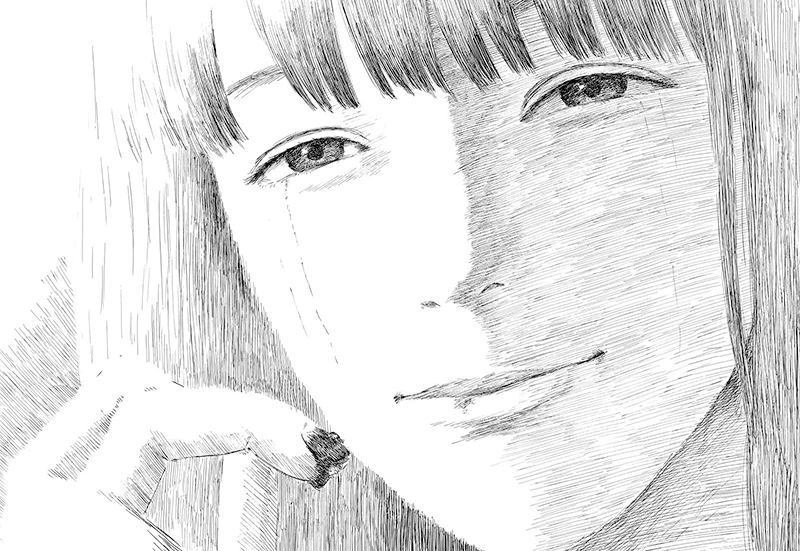
Oshimi’s storytelling is slow and deliberate, stretching time until even silence becomes unbearable. Whole pages linger on trembling hands or blank stares, building tension without ever raising their voice. Through Seiichi’s eyes, the reader is trapped, forced to endure a woman who might love him, or might want to destroy him.
Visually, Blood on the Tracks is minimalist yet devastating. The clean lines, quiet framing, and haunting close-ups make every hesitation feel monumental. It’s psychological horror delivered in whispers rather than screams.
Now that it’s finished, Blood on the Tracks stands among the best completed psychological manga ever made. It’s a chilling portrayal of family turned nightmare, and proof that true horror doesn’t need any supernatural monsters.
Genres: Horror, Psychological, Tragedy, Drama
Status: Completed (Seinen)
24. Oyasumi Punpun
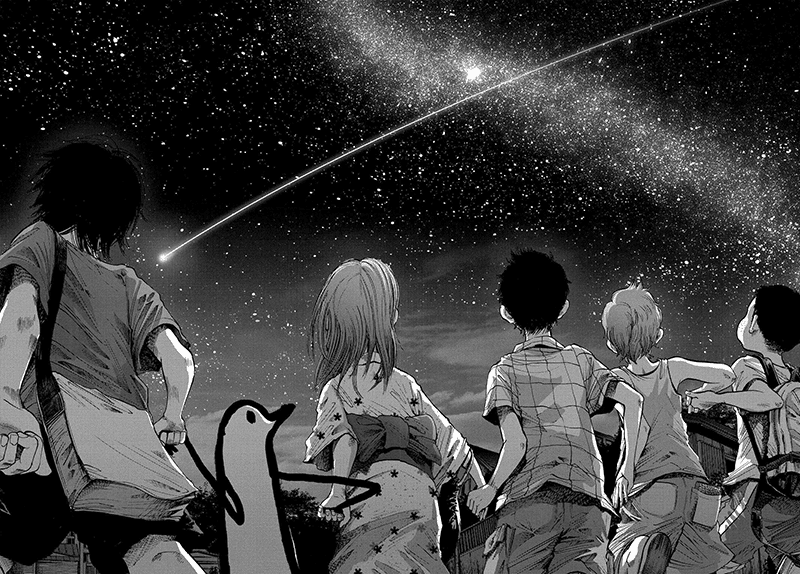
Inio Asano’s Oyasumi Punpun is one of those rare works that transcends genre. It’s a completed manga so intimate and devastating that it feels less like fiction and more like a reflection. It’s a story about growing up, falling apart, and realizing that the world won’t come and save you.
At its core, it follows Punpun Onodera, a quiet boy drawn as a cartoonish bird against hyper-detailed human backdrops. This stark visual contrast defines the series. Punpun’s simplified form isolates him from the world around him, turning him into a symbol of emotional disconnection. What begins as a tender, awkward childhood romance with a girl named Aiko soon unravels into something far darker. As Punpun matures, he stumbles through heartbreak, family trauma, and a growing sense of despair that deepens with every chapter.
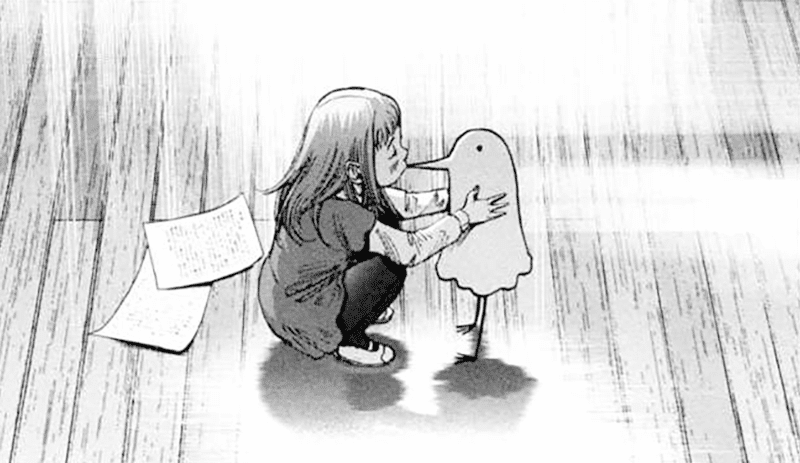
Asano’s storytelling is brutally honest. There are no melodramatic outbursts or easy resolutions, only the slow corrosion of a soul struggling to find meaning. The supporting cast, from broken families to bitter friends, reinforces the theme that everyone is quietly losing their way. Visually, the realism of the environments heightens the emotional weight, grounding even the most surreal moments in a painfully recognizable reality.
By its conclusion, Oyasumi Punpun delivers emotional closure without comfort. It’s a painful, sincere, and unforgettable masterpiece that confronts the darkness of modern life head-on. For readers searching for a completed manga about loneliness, identity, and regret, Oyasumi Punpun remains unmatched.
Genres: Psychological, Drama
Status: Completed (Seinen)
23. Planetes
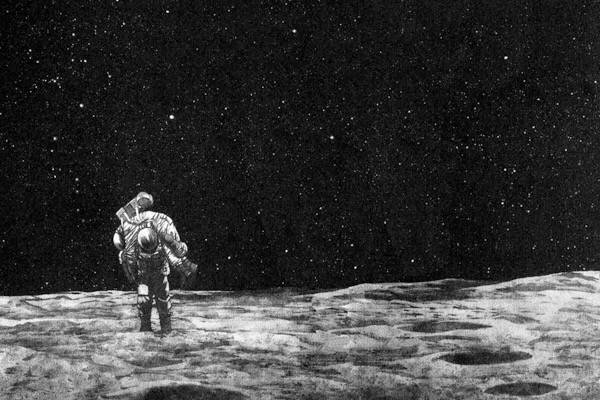
Makoto Yukimura’s Planetes is a completed science-fiction manga that finds beauty not in futuristic spectacle, but in the quiet dignity of ordinary people living among the stars. Set in the year 2075, it follows the crew of the debris-collecting ship Toy Box as they clean up the fragments of humanity’s reach into orbit. It’s hard science-fiction: grounded, technically precise, and utterly believable. Yet it’s also a deeply human story.
At the center is Hachimaki, a stubborn young astronaut chasing a dream of owning his own spaceship. Alongside him are Fee, a sharp-tongued pilot with a cigarette always in her hand; Yuri, haunted by personal tragedy; and the easygoing veteran Pops. Together, they represent different ways of coping with isolation, ambition, and the vast silence of space. Yukimura’s greatest triumph is that he never treats their struggles as small. Instead, he shows how existential questions can bloom from the most routine work.
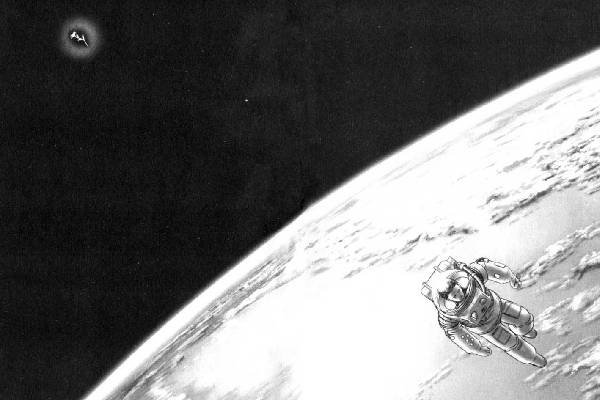
Visually, Planetes is stunning. The detailed machinery and breathtaking voids of space contrast with the emotional vulnerability of the cast. Yukimura captures both the grandeur of the cosmos and the fragility of human life within it.
Since it’s a completed manga, Planetes delivers rare closure: its characters grow, falter, and find meaning, leaving readers with a quiet but powerful sense of fulfillment. It’s thoughtful, humane, and profoundly moving. For everyone looking for one of the best completed manga in hard science-fiction, Planetes is a must-read. It’s nothing short of a love letter to space, and the people brave enough to live there.
Genres: Science Fiction, Drama, Psychological
Status: Completed (Seinen)
22. Fullmetal Alchemist
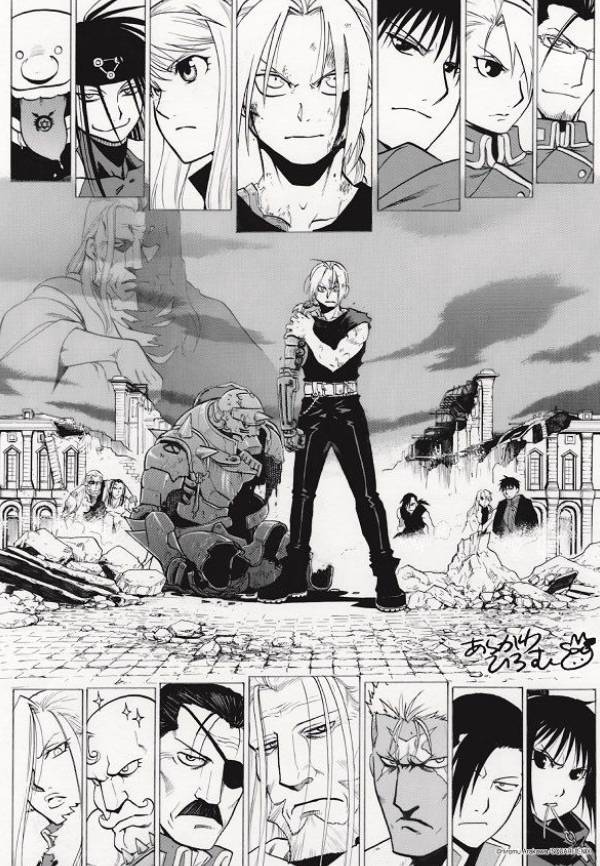
Hiromu Arakawa’s Fullmetal Alchemist stands among the best completed manga of its era. It’s a story that blends action, philosophy, and emotional depth into a perfectly balanced whole. What begins as the story of two brothers becomes an epic about the cost of ambition, the pain of loss, and the moral weight of human creation.
Edward and Alphonse Elric’s journey to reclaim what was lost in a tragic alchemical experiment anchors a sprawling narrative that stretches across the militarized nation of Amestris. This world, grounded in early industrial technology and haunted by its colonial past, feels alive and painfully relevant. Beneath its thrilling alchemic battles, Fullmetal Alchemist explores war, genocide, and the exploitation of science in the name of power. The Ishvalan conflict and its survivors, especially Scar, inject the story with a lasting moral gravity.
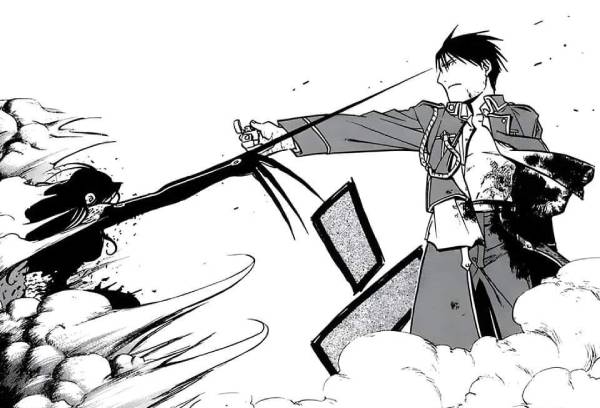
Arakawa’s ensemble cast is remarkably strong. Every major character, from Roy Mustang to Riza Hawkeye and even the terrifying Homunculi, contributes to the manga’s intricate moral tapestry. Each embodies a facet of humanity’s desires and flaws: pride, greed, envy. The Elric brothers’ confrontation with them becomes symbolic for us overcoming our own human shortcomings.
Visually, the manga combines precise storytelling with fluid action and emotional expressiveness. Its finale delivers genuine closure, rewarding readers with both catharsis and reflection. Fullmetal Alchemist endures as a modern classic, a completed manga about sacrifice, brotherhood and the price of pursuing perfection.
Genres: Action, Adventure, Fantasy, Mystery
Status: Completed (Shonen)
21. 20th Century Boys
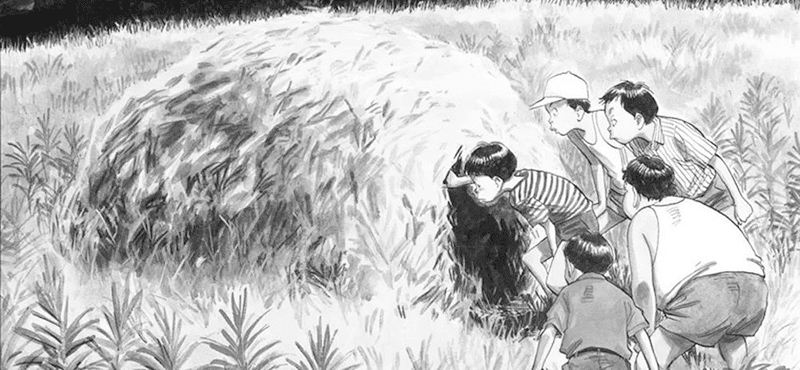
Naoki Urasawa’s 20th Century Boys is a monumental achievement in storytelling. This completed manga blends mystery, nostalgia, and global conspiracy into one of the most intricate thrillers ever written.
It begins simply enough: Kenji Endo, a former rock musician now running a convenience store, discovers that a mysterious cult led by a masked man called Friend is recreating events from a story he and his childhood friends once imagined. As fantasy becomes prophecy, Kenji realizes that their innocent childhood game may have become the blueprint for an apocalypse.
Spanning from the 1960s to a dystopian near-future, 20th Century Boys weaves together multiple timelines with masterful precision. Urasawa transitions seamlessly between the carefree energy of youth and the paranoia of adulthood, showing how the dreams and fears of children can echo through an entire generation. Each character, no matter how briefly they appear, feels distinct and helps ground the manga’s vast, interconnected web of events.
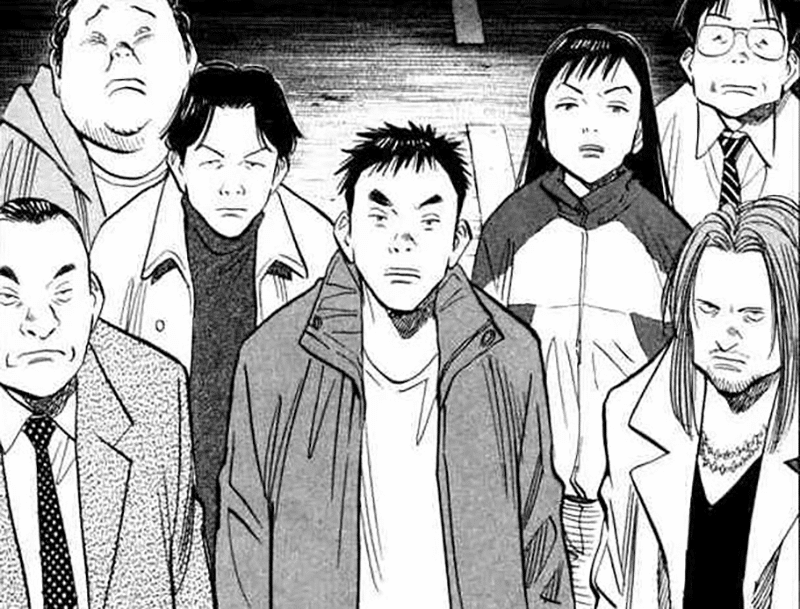
What sets this completed manga apart is how human it remains despite its grand scale. Beneath the cults, conspiracies, and societal collapse lies a story about friendship, guilt, and the fragile optimism that survives even the darkest times. Urasawa’s clean, expressive art and cinematic pacing make every twist both shocking and inevitable.
Even after finishing, 20th Century Boys still lingers not for its puzzles, but for its people. For readers who are seeking a fantastic mystery thriller, it stands as a timeless achievement.
Genres: Mystery, Thriller, Psychological
Status: Completed (Seinen)
20. Ichi the Killer
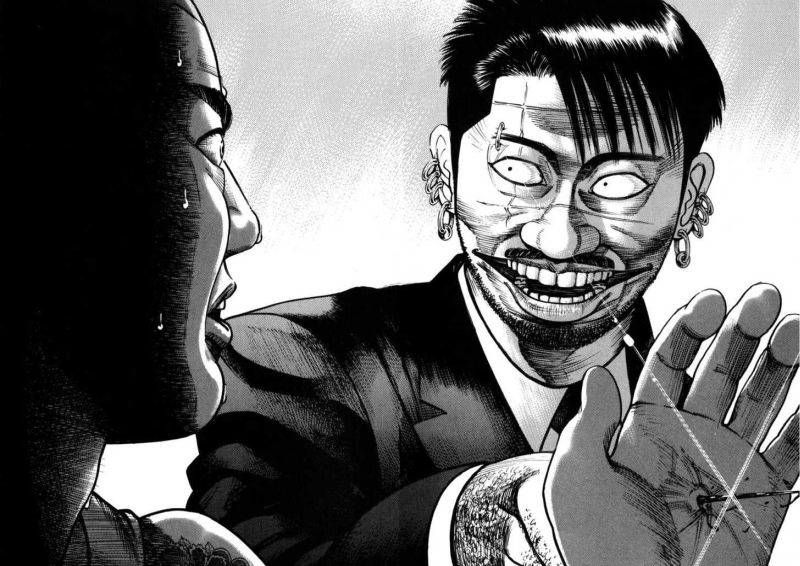
Few manga are as shocking or psychologically disturbing as Ichi the Killer. Created by Hideo Yamamoto, this completed manga stands as one of the most infamous entries in the seinen genre. It’s a brutal, unrelenting descent into the minds of two men consumed by violence and pain.
The story revolves around Ichi, a deeply traumatized assassin whose emotions oscillate between crippling fear and uncontrollable rage, and Kakihara, a sadistic yakuza obsessed with pleasure through suffering. When Kakihara’s boss disappears, his hunt for answers leads him into Ichi’s orbit, sparking a chain of blood-soaked encounters that spiral into a final confrontation.
What elevates Ichi the Killer beyond simple gore is its dissection of human depravity. Yamamoto explores the psychology of trauma, the allure of dominance, and the warped intimacy that forms between predator and victim. Beneath its ultraviolent surface lies a disturbing study of power, identity, and the ways abuse perpetuates itself.
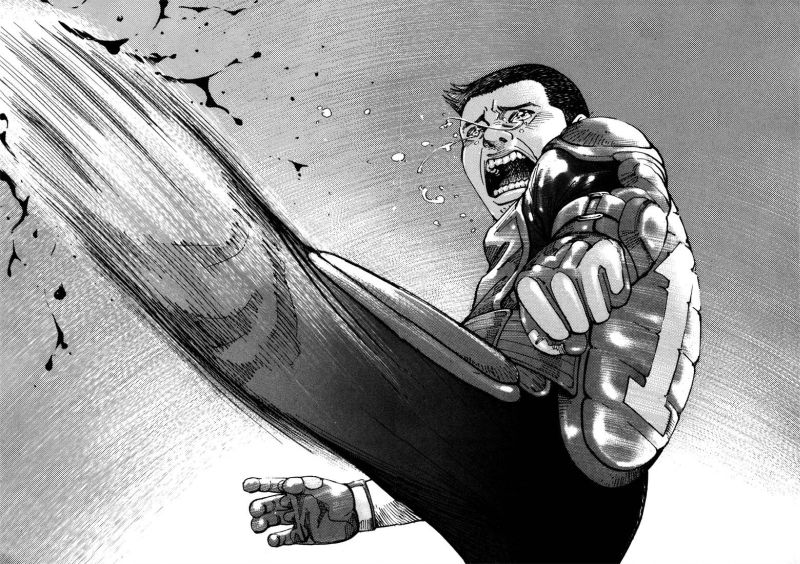
The artwork only deepens the unease. Yamamoto’s crisp lines and exaggerated expressions capture both the grotesque physical violence and the fractured states of mind behind it. Every panel feels claustrophobic and charged, serving as a reflection of the madness driving its characters.
As a completed manga, Ichi the Killer delivers a devastatingly complete arc with no compromises. It’s ugly, mesmerizing, and unforgettable. For readers who can stomach its extremes, it remains one of the best psychological crime manga of all time. It’s a haunting, nihilistic masterpiece that refuses to hide anything.
Genres: Crime, Psychological, Horror
Status: Completed (Seinen)
19. Dorohedoro
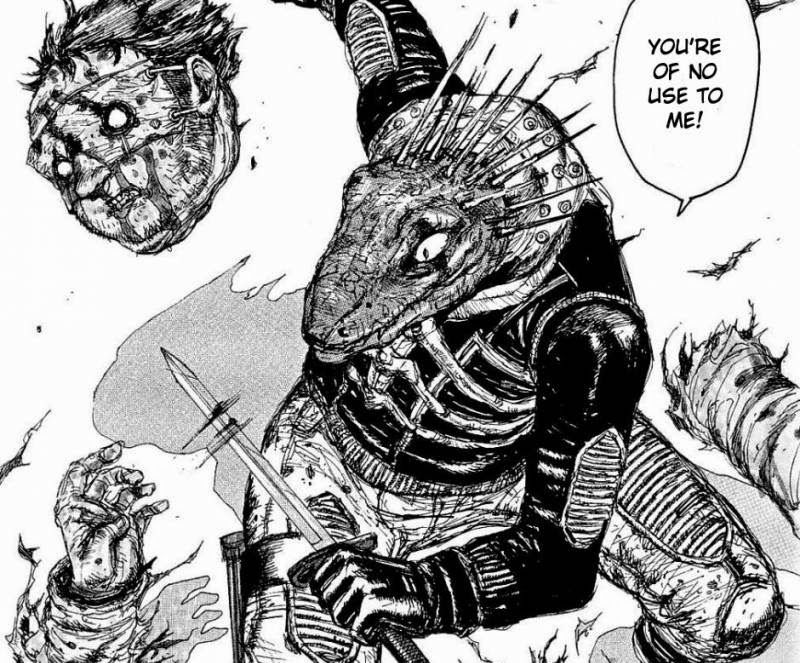
Q Hayashida’s Dorohedoro is a completed manga that thrives on contradiction, a chaotic masterpiece that’s equal parts grotesque, funny, violent, and strangely heartfelt. This makes it one of the most original dark fantasy manga ever created.
Set in the decrepit city of Hole, Dorohedoro drops readers into a world where magic users from another realm conduct experiments on ordinary people for sport. The result is a warped city of mutated bodies, corpse-strewn alleys, and everyday absurdity. In this nightmare, Kaiman, a man with a reptilian head and no memory of his past, hunts sorcerers alongside his friend Nikaido, searching for the truth about who he really is. What begins as a revenge story slowly expands into a bizarre, multi-layered saga spanning dimensions, gods, and forgotten histories.
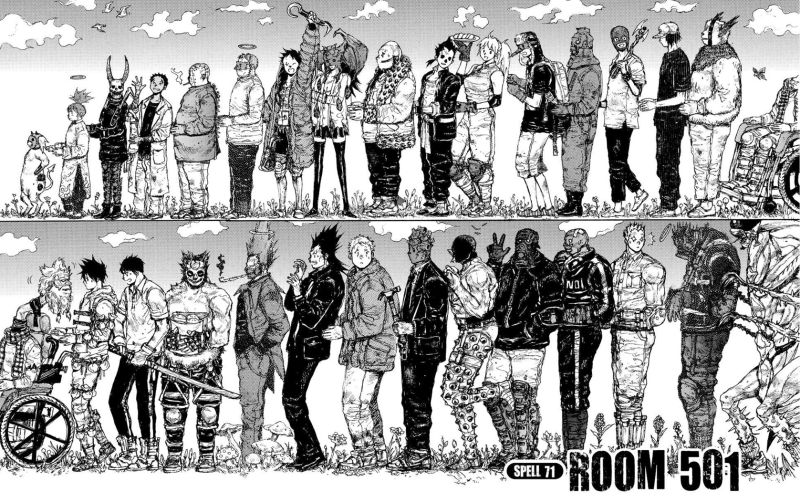
Hayashida’s genius lies in her ability to balance brutality with warmth and humor. Between decapitations, dismemberments, and surreal transformations, its characters share meals and joke around as if their world were entirely ordinary. The grotesque and the human coexist perfectly, creating a world that feels both horrifying and oddly alive.
The art is dense, grimy, and stunning. Every panel brims with texture, from Hole’s decaying streets to the baroque strangeness of the Sorcerer’s World. Character designs, from lizard-headed antiheroes to mushroom-obsessed mob leaders, are unforgettable, adding to the manga’s cult appeal.
Dorohedoro offers a complete, unapologetically weird journey that rewards readers who embrace its madness. For fans of horror, dark fantasy, or surreal storytelling, Dorohedoro stands among the best manga ever drawn. It’s nothing short of a violent fever dream with genuine heart.
Genres: Horror, Dark Fantasy, Supernatural, Mystery
Status: Completed (Seinen)
18. Gantz
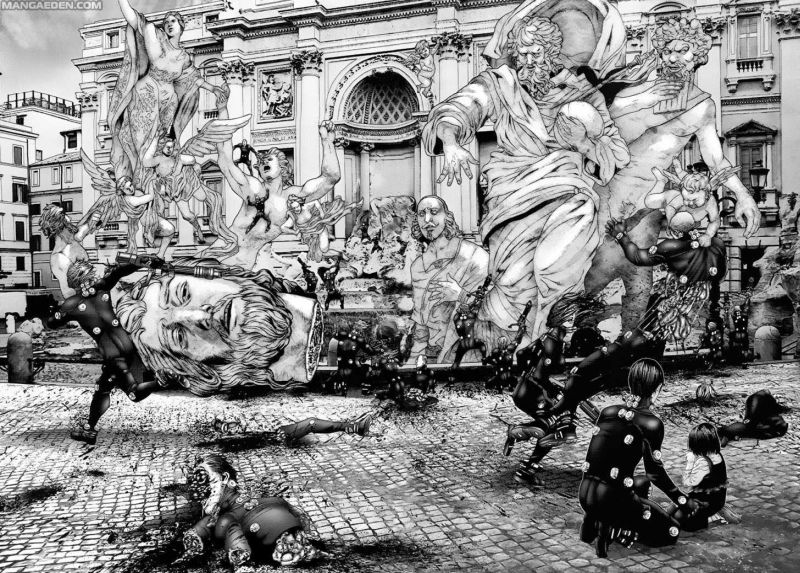
Hiroya Oku’s Gantz is the definition of excess. It’s a completed manga that fuses horror, science-fiction, and raw chaos into one of the most violent and imaginative works ever serialized. It’s notorious for its unflinching brutality and surreal energy, but also for the strange beauty hidden within its madness.
The story begins with Kei Kurono and Masaru Kato, two teenagers who die saving a drunk man from a train. Instead of passing on, they awaken in a mysterious apartment with strangers who all suffered a similar fate, and a massive black orb called Gantz. The sphere commands them to hunt aliens hiding among humans, dragging them into a series of nightmarish missions. What follows is a saga of escalating violence, absurd spectacle, and unexpected evolution.
Each chapter pushes boundaries. The aliens are grotesque, creative, and often disturbingly monstrous. The fights are choreographed with cinematic precision, blending sleek science-fiction weaponry with splattering gore. Oku’s digital art gives every scene a glossy, hyperreal sheen that feels both futuristic and nightmarish.
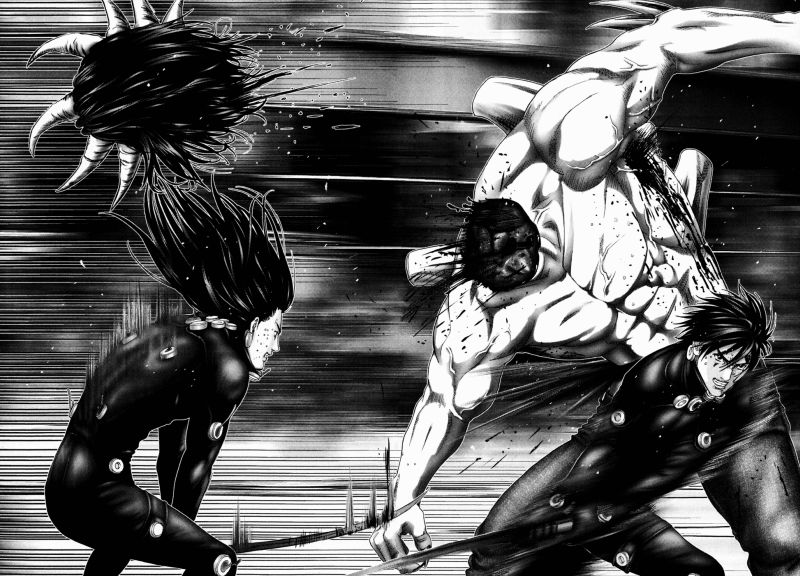
Yet beneath the carnage, Gantz reveals a surprisingly introspective side. Japan outside the missions is a mirror to their darkness: bullying, exploitation, and mass despair seem to be the norm. Kurono’s transformation from a selfish, apathetic teenager to a leader who values life gives the story its emotional backbone, grounding the chaos with genuine character growth.
Since it’s a finished manga, Gantz delivers a complete experience that cements its cult status. It’s daring, messy, and unforgettable. Without a doubt one of the best completed manga for fans of intense, creative, and unrestrained science-fiction horror.
Genres: Action, Sci-Fi, Horror, Psychological
Status: Completed (Seinen)
17. Eden: It’s an Endless World!
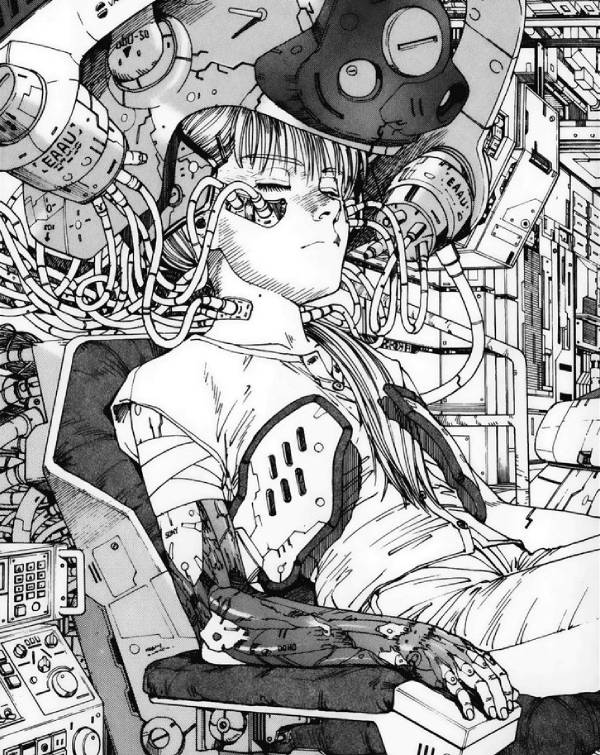
Hiroki Endo’s Eden: It’s an Endless World! stands among the best completed manga in the cyberpunk and science-fiction genre. It’s an ambitious, sprawling vision of a broken future held together by violence, faith, and the will to survive. Serialized from 1997 to 2008, it offers not just a dystopian setting, but a deeply human story.
The series opens in the aftermath of a devastating global pandemic that wiped out much of humanity. A secret organization known as Propater rises to power, reshaping geopolitics and waging ideological wars across the world. Years later, the story follows Elijah Ballard, the son of a drug lord and one of the few immune to the virus. His life becomes a brutal struggle for survival amid crime syndicates, mercenaries, and the omnipresent reach of Propater. What begins as a tale of revenge evolves into a philosophical epic about technology, faith, and the moral cost of progress.
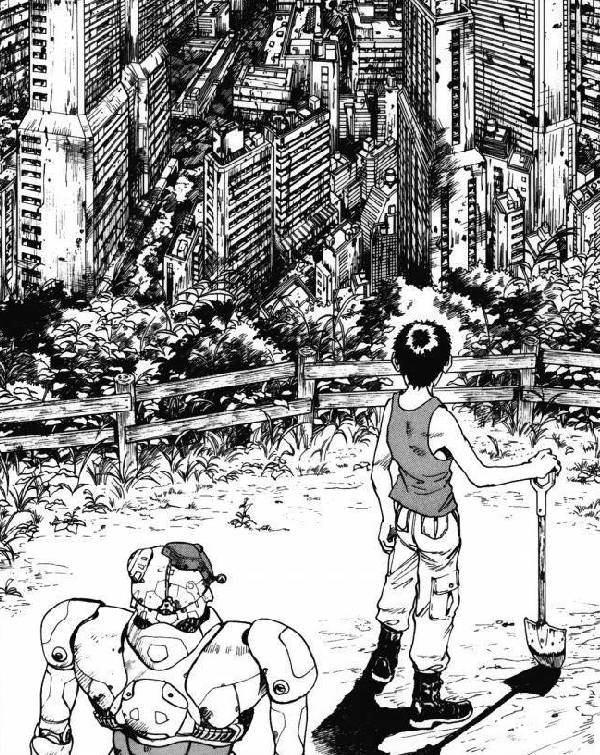
Endo’s writing is unflinchingly adult. He depicts war, sex, poverty, and trauma with stark realism rather than sensationalism. Every character, from mercenaries to revolutionaries, carries their own scars and convictions, creating a tapestry of conflicting motives and ideas. His art reflects the same maturity. It shines with detailed anatomy, brutal action, and moments of haunting quiet that underline the story’s weight.
As a completed manga, Eden delivers a powerful and fully realized narrative that closes on reflection rather than spectacle. If you want a character-driven science-fiction saga that questions what it means to be human, Eden: It’s an Endless World! remains one of the best ever written.
Genres: Sci-Fi, Cyberpunk, Drama, Psychological
Status: Completed (Seinen)
16. Liar Game
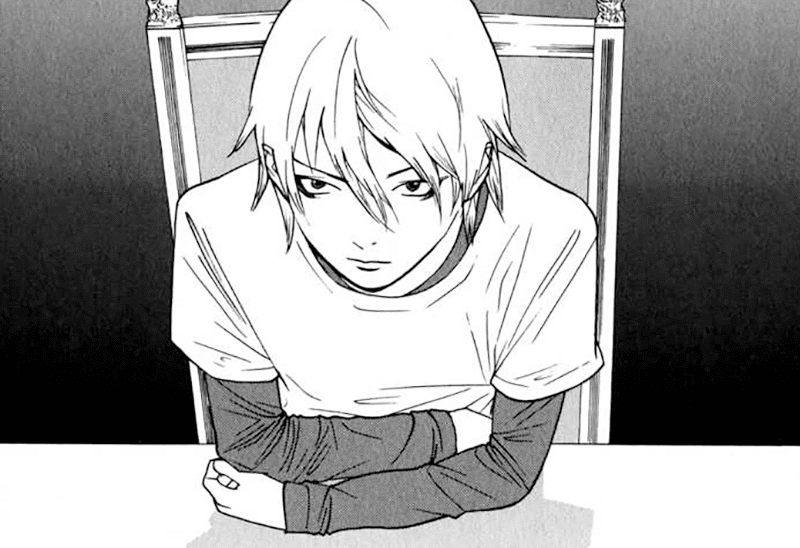
Shinobu Kaitani’s Liar Game stands among the best completed manga for fans of psychological warfare and intricate strategy. It’s a cerebral thriller that thrives on deception, logic, and human weakness while testing not only its characters but also its readers.
The premise is deceptively simple: Kanzaki Nao, an impossibly honest young woman, is dragged into the Liar Game, a high-stakes tournament built entirely on deceit. Participants manipulate, bluff, and betray one another for enormous sums of money, while crushing debt awaits the losers. Out of desperation, Nao turns to Shinichi Akiyama, a recently freed con artist and master strategist. What follows is a series of psychological battles where every word, gesture, and alliance carries hidden meaning.
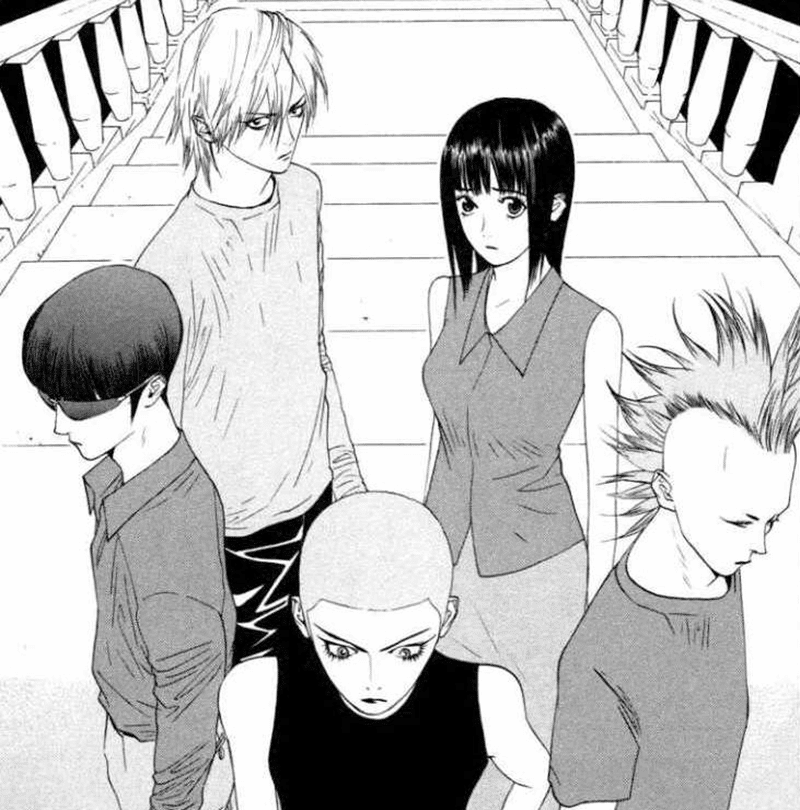
Each new round of the game escalates in scale and complexity. Kaitani crafts elaborate scenarios that challenge logic, trust, and morality all at once. Watching Akiyama dismantle his opponents through flawless reasoning and audacious gambits is consistently exhilarating, especially as rival masterminds emerge to challenge him. The tension doesn’t come from violence or action, but from intellect and the thrill of never knowing who’s truly in control.
Though the final arc left some readers divided, Liar Game still delivers a complete and satisfying experience. It closes with a sense of resolution that emphasizes the human side of its grand psychological spectacle. Clever, tense, and endlessly re-readable, Liar Game remains one of the best manga series for anyone who loves strategic duels and moral dilemmas.
Genres: Psychological, Thriller, Mystery
Status: Completed (Seinen)
15. Bokutachi ga Yarimashita
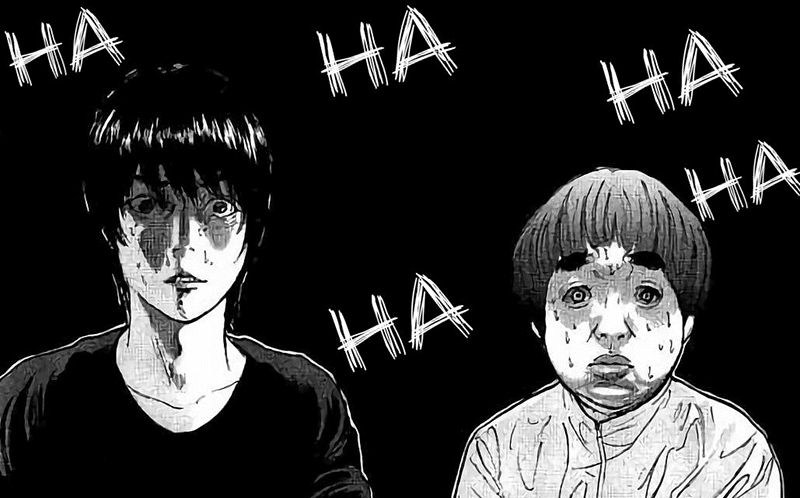
Kaneshiro Muneyuki and Hikaru Araki’s Bokutachi ga Yarimashita starts as a familiar high school story but transforms into one of the darkest, most psychologically intense completed manga of its kind. It’s a story about guilt, cowardice, and the irreversible moment when youthful stupidity turns into tragedy, a reminder that one mistake can destroy everything.
The manga centers on Tobio Masubuchi and his three friends, Maru, Isami, and Paisen. The four of them are ordinary teenagers with no real ambition. When Maru is beaten by delinquents from a rival school, the group plans a childish revenge prank to restore their pride, but it spirals out of control. In a single night, they go from carefree students to criminals haunted by what they’ve done.
What follows isn’t a revenge tale or a mystery. It’s a slow, suffocating descent into guilt. Each of the boys copes in his own self-destructive way: denial, escapism, or numb survival. Kaneshiro doesn’t romanticize their suffering; he dissects it with painful realism, showing how guilt corrodes friendships and identity alike.
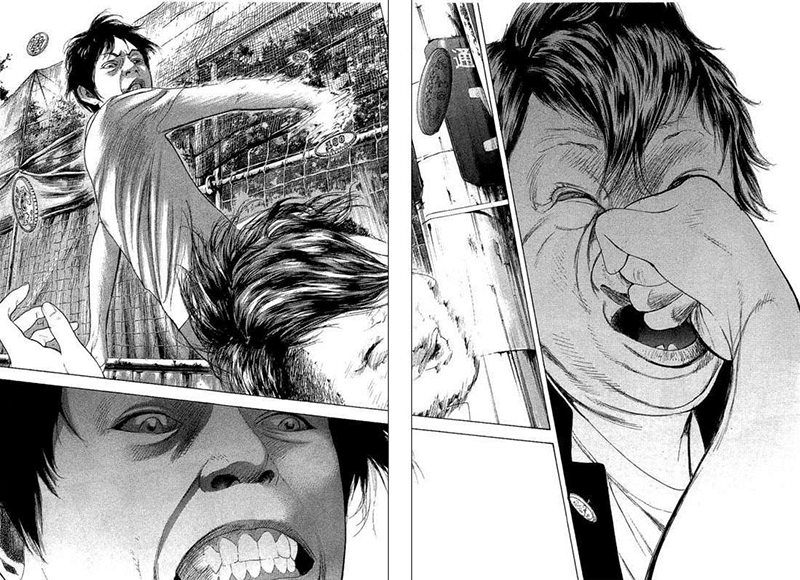
The artwork amplifies this unease. Every anxious glance, trembling hand, or tearful breakdown feels disturbingly human. There’s little comfort here, and no easy redemption, only the quiet devastation of consequences that can’t be undone.
Bokutachi ga Yarimashita closes with emotional finality. It doesn’t seek forgiveness, only understanding. For readers drawn to psychological drama and moral collapse, Bokutachi ga Yarimashita stands among the best completed manga of its generation.
Genres: Psychological, Crime, Drama
Status: Completed (Seinen)
14. Alice in Borderland
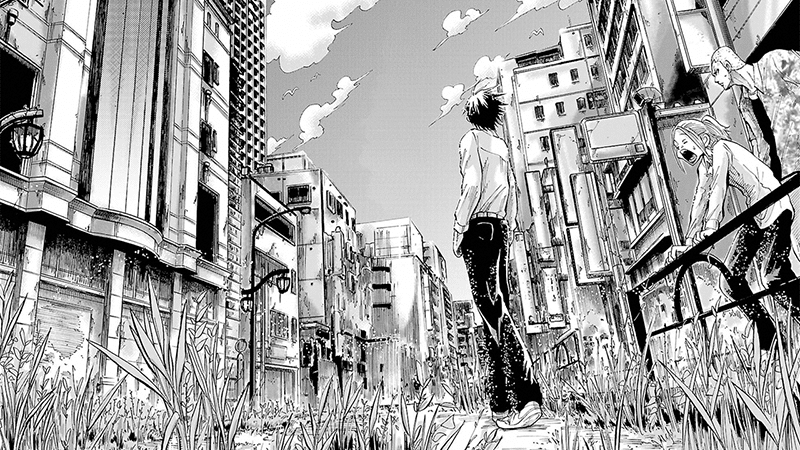
Haro Aso’s Alice in Borderland stands among the best completed manga in the survival and death game genre. It’s a clever, brutal, and emotionally charged series that pushes its characters to the breaking point while asking what it really means to live.
The story begins with Ryohei Arisu, a disillusioned teenager who feels alienated from the world. One night, a burst of mysterious fireworks transports him and his friends to the Borderlands, an abandoned Tokyo where survival depends on winning deadly games. Each challenge corresponds to a playing card suit: spades test strength, clubs teamwork, diamonds intellect, and hearts the psyche. This simple system forms the backbone of the series’ tension, ensuring no two games are alike.
What sets Alice in Borderland apart is how it blends psychological intensity with raw emotion. The games are thrilling because of their danger, but they also strip away pretense and reveal who each player is. Arisu’s journey from apathy to determination, and his bond with Usagi, anchor the story in something deeply human amid all the chaos.
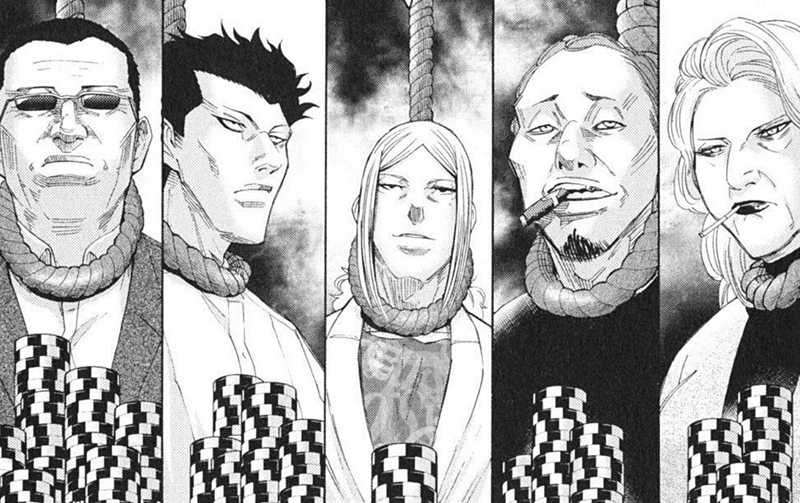
Visually, Aso’s art brings the Borderland to life. Sprawling, empty streets contrast with meticulously designed game arenas and moments of shocking violence.
As a completed manga, Alice in Borderland offers a full, satisfying arc that balances adrenaline-fueled tension with introspective storytelling. Even after its end, it lingers as a survival thriller that’s as thoughtful as it is thrilling. It’s an easy top pick among high-stakes psychological dramas.
Genres: Survival, Psychological Thriller, Drama
Status: Completed (Shonen)
13. Kamisama no Iutoori & Kamisama no Iutoori Ni
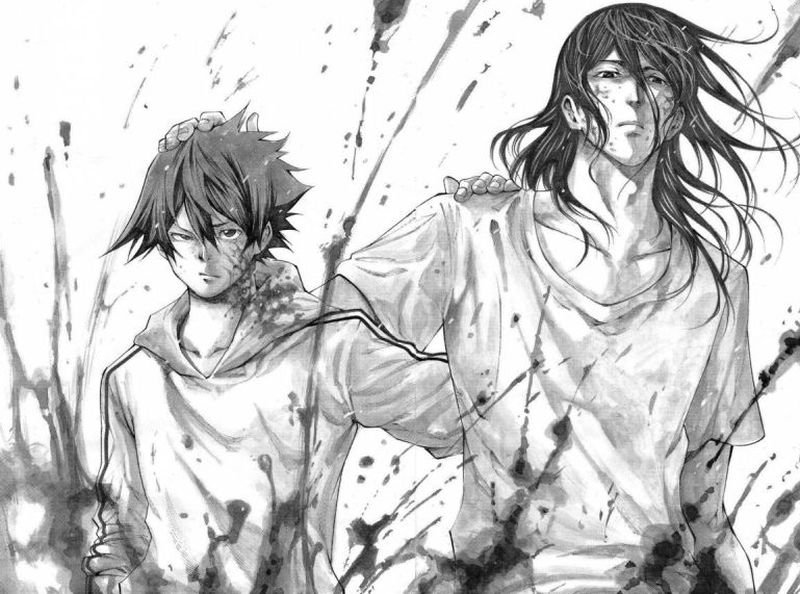
Muneyuki Kaneshiro and Akeji Fujimura’s Kamisama no Iutoori and its sequel Kamisama no Iutoori Ni together form one of the best completed manga in the death game genre. It’s a fusion of surreal horror, psychological tension, and outrageously absurd creativity that constantly reinvents itself.
The story wastes no time plunging into chaos. When a Daruma doll appears in a high school classroom and forces students into a deadly game, Shun Takahata’s ordinary life ends instantly. From there, reality collapses into a sequence of strange, ritualistic trials where survival depends not only on intelligence and courage, but sheer luck. The sequel expands the world even further, introducing new contestants and a larger mystery that eventually loops back to Shun’s original group.
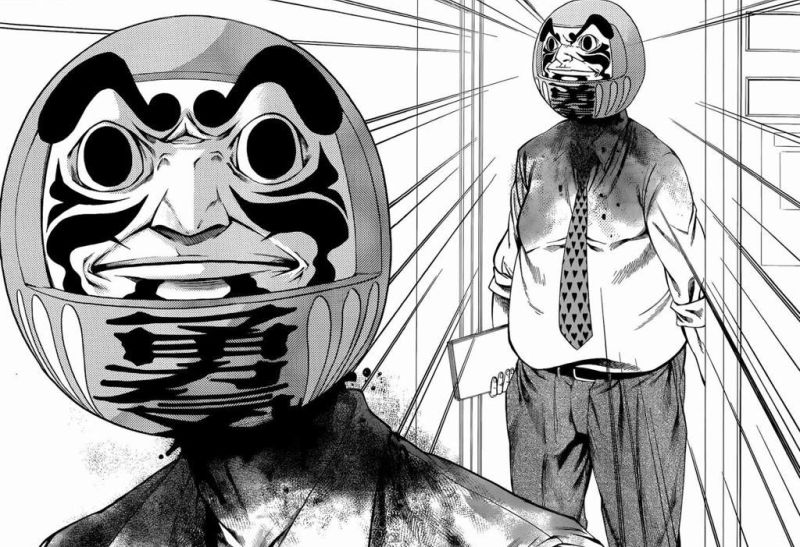
What sets this series apart is its unpredictability. Every game is a twisted reinterpretation of something innocent. From folk toys to playground pastimes, each game expose the cruelty and fragility of human nature. Characters snap under pressure, alliances crumble, and moments of triumph often end in carnage.
The cast is equally vivid. While Akashi, the sequel’s protagonist, can feel a bit too idealistic and archetypal, maniacs like Amaya bring raw, chaotic energy to the series. The standout is Ushimitsu, who turns from a dangerous wildcard into one of the series’ most nuanced and developed characters. Combined with Fujimura’s bold kinetic artwork, which grows more confident and elaborate in the sequel, the result is nothing short of fantastic.
Kamisama no Iutoori delivers a full, unflinching arc. While its ending can be divisive, it remains a must-read for anyone looking for a blend of violence, philosophy and absurd spectacle.
Genres: Survival, Psychological Thriller, Action
Status: Completed (Shonen)
12. Innocent
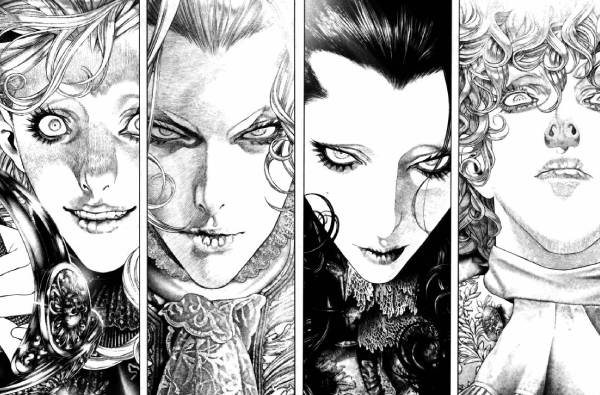
Shinichi Sakamoto’s Innocent and its sequel Innocent Rouge stand among the most visually stunning completed manga ever created. They form an operatic fusion of history, psychology, and art that transforms 18th-century France into a stage of exquisite cruelty, fragile humanity, and unmatched visual beauty.
The series follows Charles-Henri Sanson, the royal executioner of Paris, and later his sister Marie-Joseph. Together, they embody the contradictions of a society obsessed with beauty and blood, progress and punishment. The Sansons’ world is one of powdered wigs and guillotines, where public execution is spectacle and duty becomes damnation.
Rather than a conventional historical drama, Innocent unfolds like a tragic opera where Sakamoto mixes fact with fever dream. Characters appear like divine performers, timelines intersect, and the grotesque becomes beauty. His France is a theater of death rendered in impossible detail. Silk corsets, cathedral windows, and glimmering blades are captured with obsessive precision. Each page is stunning, so beautiful, it feels torn from an art book rather than drawn for a manga.
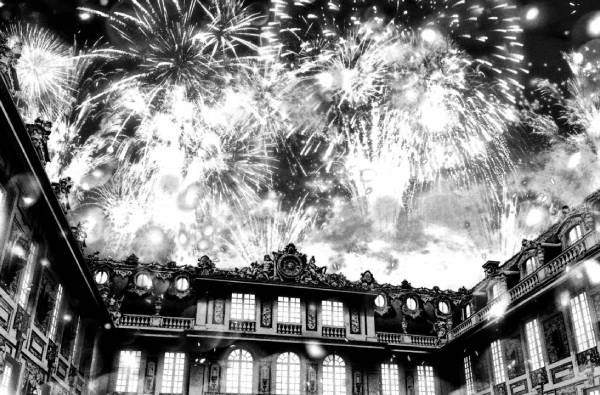
The sequel, Innocent Rouge, shifts the spotlight to Marie-Joseph, whose defiance of the old world gives the story its revolutionary pulse. Her change from executioner to symbol of the rebellion mirrors France’s descent into chaos, both glorious and horrifying.
As a finished manga, Innocent delivers not just closure, but legacy. It’s a meditation on art, morality, and the birth of modernity itself. Even more so, it opens an unusually beautiful window to one of history’s most chaotic times. For readers drawn to manga that merge historical grandeur with philosophical depth, Innocent is an unmissable masterpiece.
Genres: Historical, Drama, Psychological
Status: Completed (Seinen)
11. Homunculus
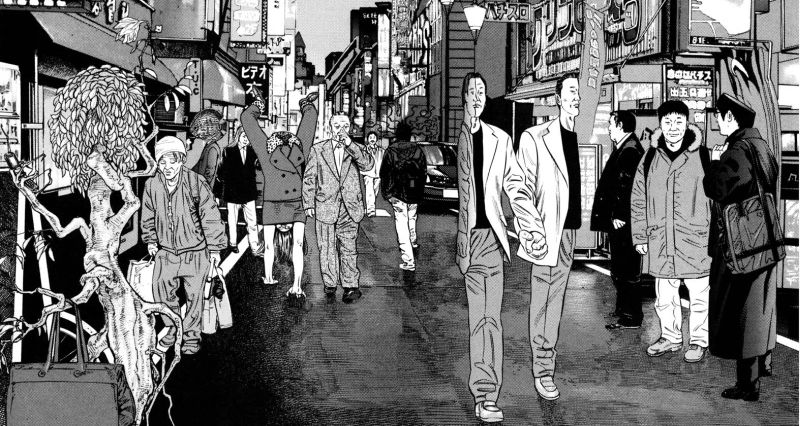
Hideo Yamamoto’s Homunculus is one of the most haunting completed manga in the psychological horror genre. It’s a story that begins with curiosity and spirals into pure madness. Known for his extreme and transgressive works, Yamamoto trades gore for something far more disturbing: the dissection of the human psyche itself.
The manga centers on Susumu Nakoshi, a man living between two worlds. Sleeping in his car, he faces both a park full of the homeless and a row of luxurious hotels. When a young medical student, Manabu Ito, offers him money to undergo trepanation, a procedure that involves drilling a hole in the skull, Nakoshi reluctantly agrees. What follows is a transformation both physical and existential. After the operation, he begins to see people’s hidden selves, grotesque manifestations of their inner pain and desire, the homunculi.
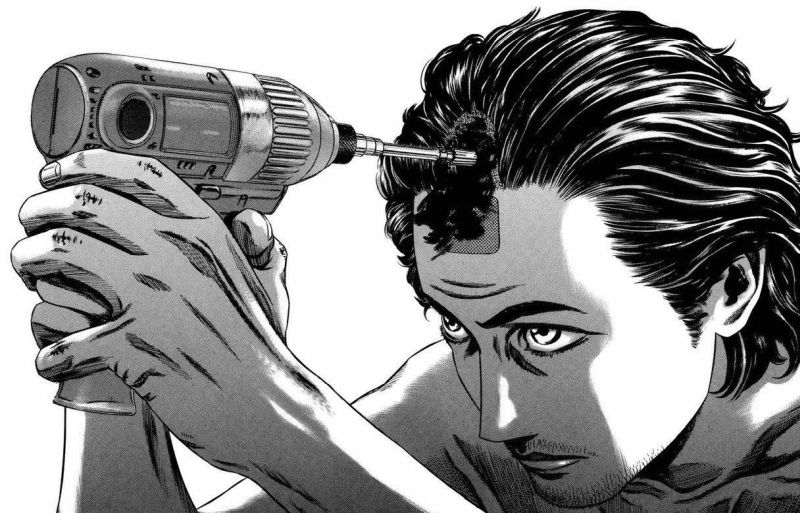
As Nakoshi’s visions continue, Homunculus morphs from speculative horror into an unnerving study of trauma, repression, and fractured identity. Yamamoto never gives clear answers. Are these visions supernatural, psychological, or projections of Nakoshi’s own guilt? The uncertainty is the source of the manga’s power, pulling readers into a slow, suffocating descent where reality itself feels unstable.
The art is as bold as the ideas. Yamamoto’s hyper-detailed realism collides with surreal body horror, turning metaphor into something tangible and revolting. The result is both beautiful and grotesque, as if a mirror were held up to the subconscious.
Homunculus ends with ambiguity, not resolution. While it suits the manga’s theme of identity and perception perfectly, it can be daunting. Yet for anyone seeking a unique psychological manga, this remains a must-read: strange, disturbing, and unforgettable.
Genres: Psychological, Horror, Drama, Philosophical
Status: Completed (Seinen)
10. Monster
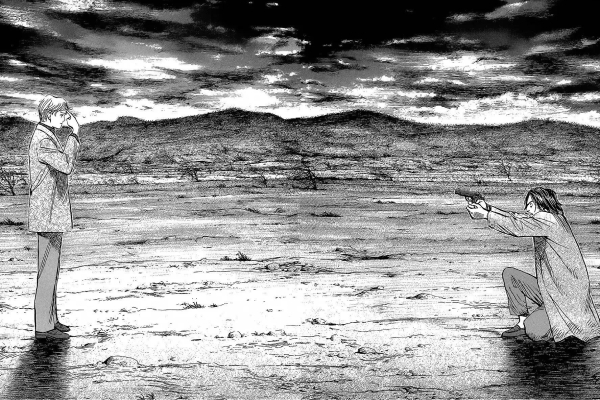
Naoki Urasawa’s Monster remains one of the most influential completed manga in psychological thriller history. It’s a sprawling, morally complex story about the darkness that lurks within humanity. Set in post-Cold War Germany, it follows Dr. Kenzo Tenma, a gifted neurosurgeon whose life unravels after a fateful choice: saving a young boy named Johan Liebert instead of an influential politician. That decision births a monster, and the rest of the manga becomes Tenma’s relentless pursuit of the evil he inadvertently spared.
Unlike most thrillers, Monster builds its tension through precision rather than spectacle. Every silence, every conversation, every quiet reveal deepens the sense of dread. Johan isn’t a supernatural killer or cartoonish villain. Instead, he’s terrifyingly real, capable of dismantling lives with logic, charm, and persuasion. His presence infects every chapter, even when he’s not on the page.
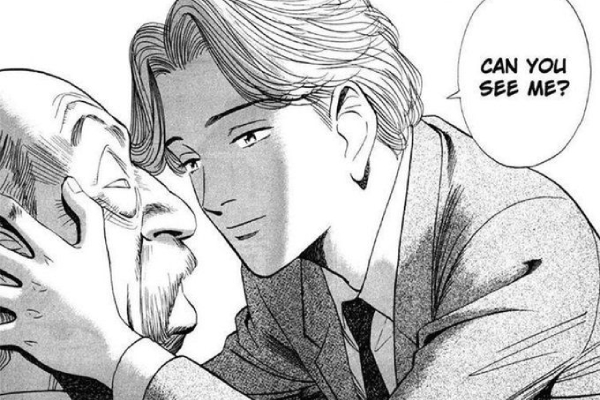
What truly sets Monster apart is its depth of humanity. Urasawa gives weight to every side character, from detectives to journalists or orphaned children, showing how each is affected by Johan’s manipulation. The result is a story that feels alive, intricate, and emotionally devastating.
The artwork is understated yet cinematic and heightens the realism. Urasawa’s grounded style gives the European setting authenticity and his characters expressive nuance.
Monster’s story ends with a fantastic conclusion, both moral and emotional. It’s a haunting story about guilt, empathy and the nature of evil itself. If you’re after the gold standard of psychological manga, Monster is nothing short of a must-read.
Genres: Psychological, Mystery, Drama
Status: Completed (Seinen)
9. Freesia
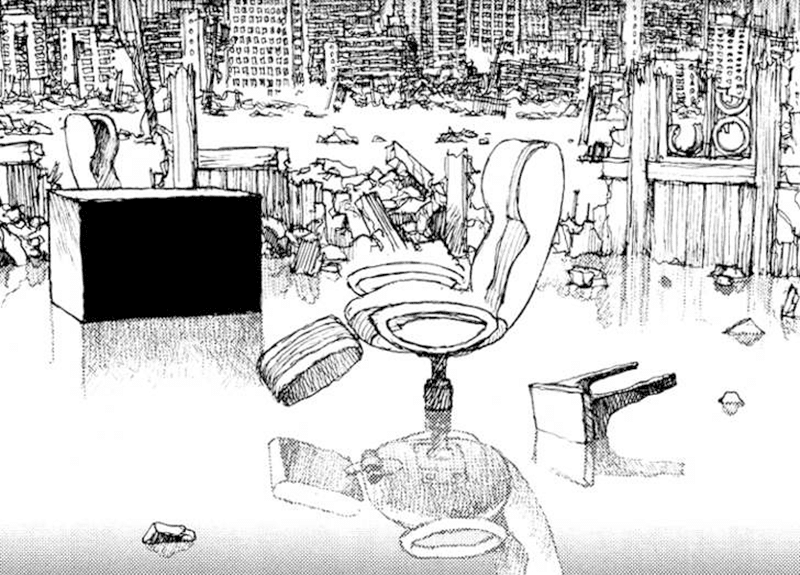
Jiro Matsumoto’s Freesia is one of those manga that linger long after you’ve finished it. It’s a bleak, surreal descent into violence, delusion, and the slow decay of human empathy. Set in a near-future Japan consumed by war, where a new law allows people to legally avenge murdered loved ones. Victims’ families can execute justice themselves or hire professionals to do it for them.
This is where the main character, Kano, comes in. He’s one of the people who work for a firm specializing in these types of retaliatory killings. But he’s far from stable. Haunted by hallucinations, fragmented memories and deep psychological trauma, he’s become a mirror of the world around him: detached, disoriented, and slowly collapsing under the weight of his own mind. Matsumoto turns this revenge-driven setup into something far stranger and more personal, a discussion of mental illness and the futility of vengeance in a collapsing society.

The artwork perfectly complements the tone. Matsumoto’s style is rough, raw, and purposefully uneven. Backgrounds are rendered with obsessive detail, while faces are sketchy and distorted, creating a haunting contrast between reality and perception. Scenes shift without warning, making it unclear whether we’re witnessing truth or delusion. It’s a stylistic choice that deepens the story’s psychological tension.
What makes Freesia unforgettable is its refusal to comfort. It offers no heroes, no redemption, only broken people. Its final pages feel strange, almost like a fourth wall break, yet they remain consistent with the manga’s themes. For readers who want to read a deeply psychological and existential completed manga, Freesia is a haunting masterpiece.
Genres: Psychological, Crime, Drama
Status: Completed (Seinen)
8. Akira
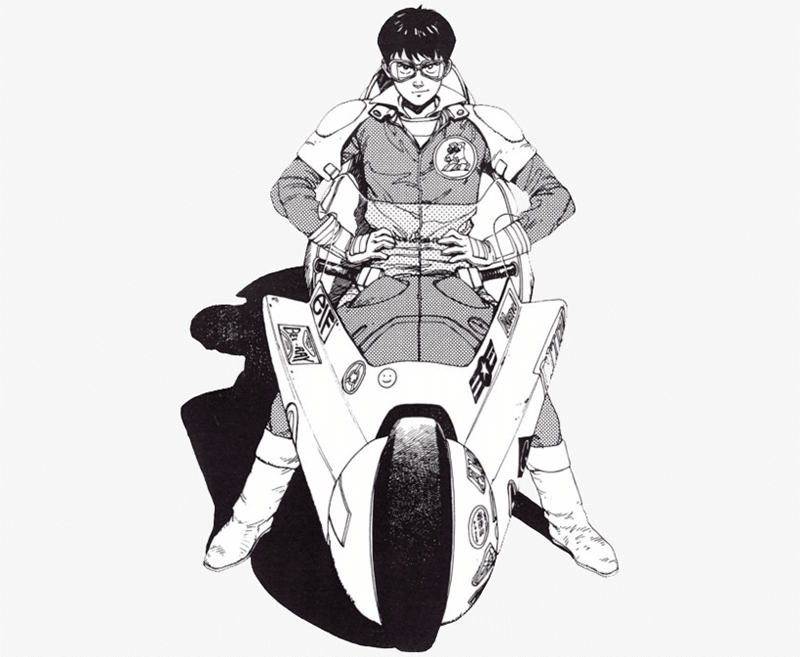
Katsuhiro Otomo’s Akira is the cornerstone of Japanese cyberpunk, a completed manga that redefined how science-fiction could look, feel, and sound on the page. Decades after its debut, it still towers as one of the most visually and thematically ambitious works ever created, influencing everything from anime and gaming to Hollywood blockbusters.
Set in the sprawling city of Neo-Tokyo, Akira opens with two teenage delinquents: Kaneda, the brash leader of a biker gang, and Tetsuo, his insecure friend and rival. Their reckless joyride collides with a secret government project, awakening destructive psychic powers in Tetsuo and triggering the catastrophic return of Akira, a being of apocalyptic potential. From this moment, the story spirals into chaos, blending political unrest, rebellion, and divine retribution in one unrelenting crescendo.
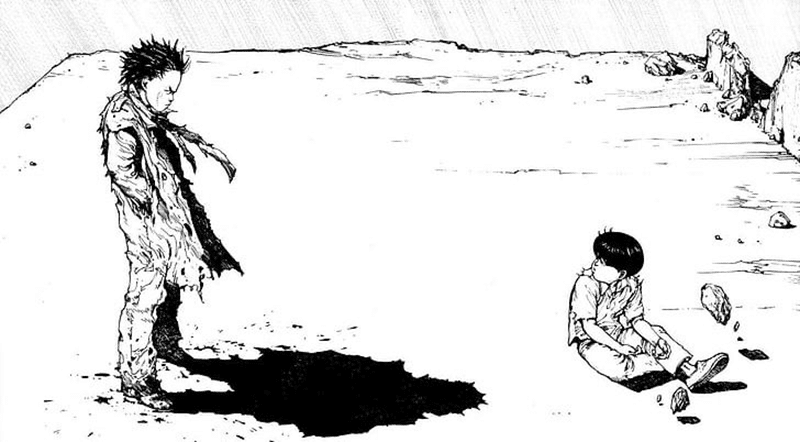
Otomo’s artwork is simply legendary; every line is filled with kinetic detail. The cluttered alleys, shattered concrete, and humming machinery of Neo-Tokyo all feel alive. His precision and cinematic framing create an energy few modern manga can ever hope to match. Even as the story grows surreal and explosive, that obsessive realism anchors it.
The characters may be archetypes such as the reckless hero, the fallen friend, and the corrupted elite, yet their raw emotions give the story its pulse. Beneath all the destruction lies a deeply human tale of power, loss, and control.
Akira closes on a haunting note of renewal after near-total destruction, a fitting end to its thematic cycle of chaos and rebirth. For readers who want to explore the roots of Japanese cyberpunk or simply want to read one of the genre’s best entries, Akira is a must-read.
Genres: Cyberpunk, Dystopian, Action
Status: Completed (Seinen)
7. The Climber
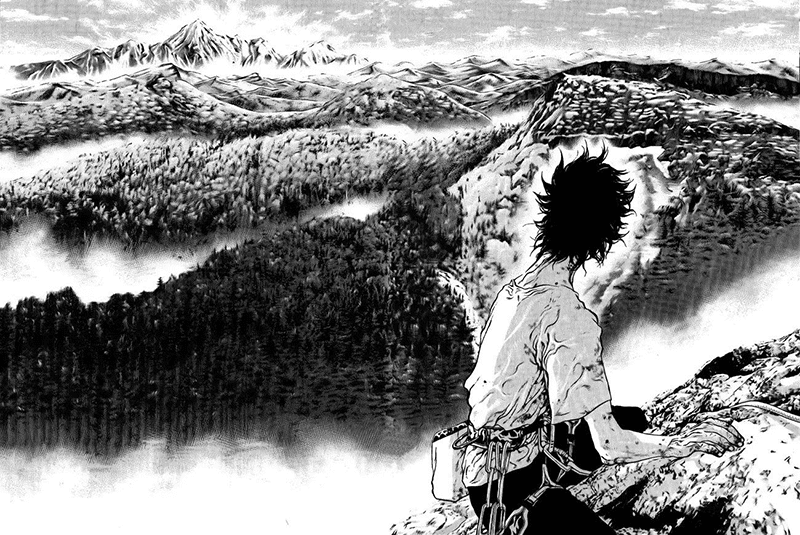
Shinichi Sakamoto’s The Climber is one of those rare completed manga that completely transcends its genre. What begins as a story about mountaineering evolves into a meditation on isolation, obsession, and the quiet pursuit of meaning. It’s not only one of the best completed manga in the sports category, but one of the most hauntingly beautiful works in all of seinen.
The story follows Buntarou Mori, a withdrawn teenager whose life changes after a dare leads him to scale the school building. In that reckless moment, something awakens in him: the desire to climb, to push higher, to find something beyond human limits. From there, Mori’s journey becomes less about competition and more about survival, both physical and psychological. Mountains become mirrors of his own emptiness and the unreachable peaks within himself.
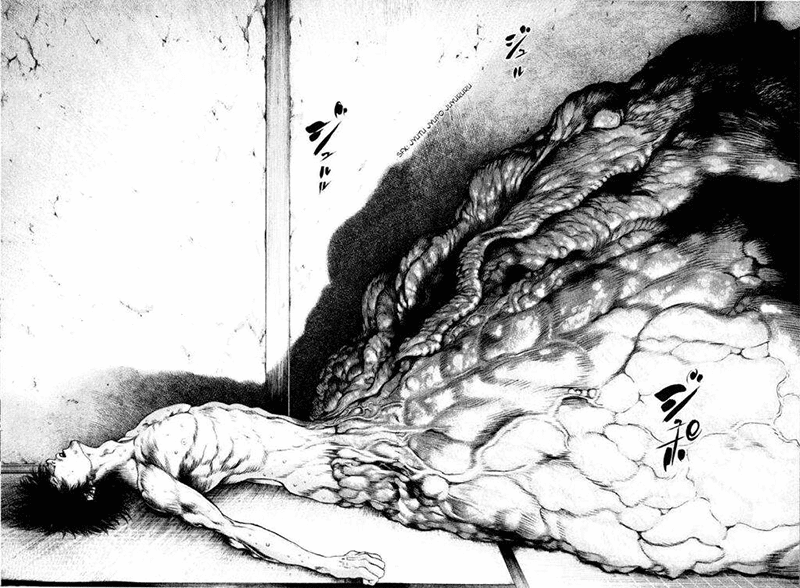
Sakamoto’s art is as breathtaking as ever. The mountain landscapes feel alive, rendered with staggering realism and atmosphere. Entire sequences unfold in silence; a single double-page spread can convey awe, terror, or existential clarity. Every cliff face and snowstorm carries emotional weight, making the act of climbing feel almost sacred.
After the introduction, The Climber shifts from a traditional sports narrative to something more introspective and philosophical. In its second half, the pacing becomes fragmented, skipping events and employing flash-forwards. This disjointed narrative can sometimes be confusing, but its central themes never lose their intensity.
The Climber is one of the best completed manga series ever created: mature, visually stunning and emotionally resonant.
Genres: Sports, Drama, Psychological
Status: Completed (Seinen)
6. JoJo’s Bizarre Adventure Part 7: Steel Ball Run
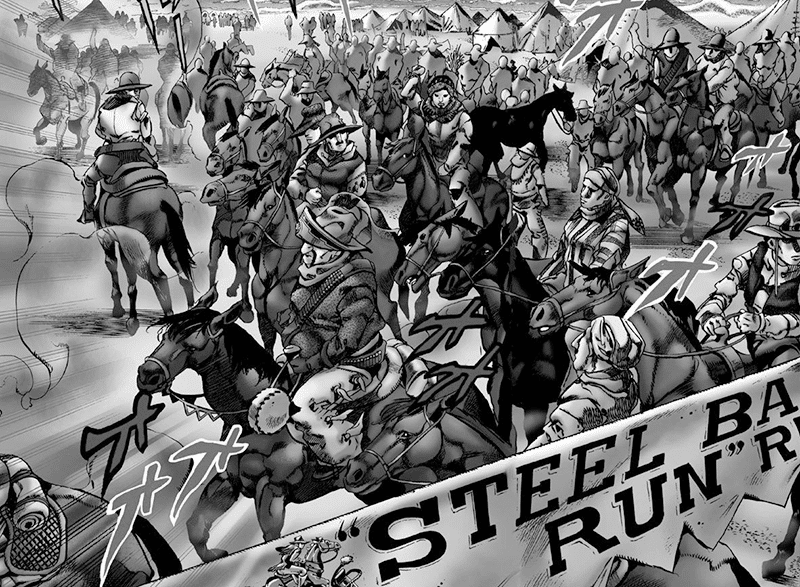
Hirohiko Araki’s Steel Ball Run is not only the creative peak of JoJo’s Bizarre Adventure, but also one of the best completed manga in modern history. Though the JoJo series still continues, each part is a self-contained narrative, and Steel Ball Run may be the very best of them.
Set in an alternate 19th-century America, the story follows Johnny Joestar, a once-celebrated jockey left paralyzed after an accident. His life takes an unexpected turn when he meets Gyro Zeppeli, a mysterious racer armed with spinning steel balls that channel a secret energy known as the Spin. Drawn to his strange power, Johnny joins the continent-wide Steel Ball Run, a horse race stretching from San Diego to New York. What begins as a competition for glory soon becomes a clash of ideals, faith, and fate, as assassins, conspirators, and Stand users descend upon the race.
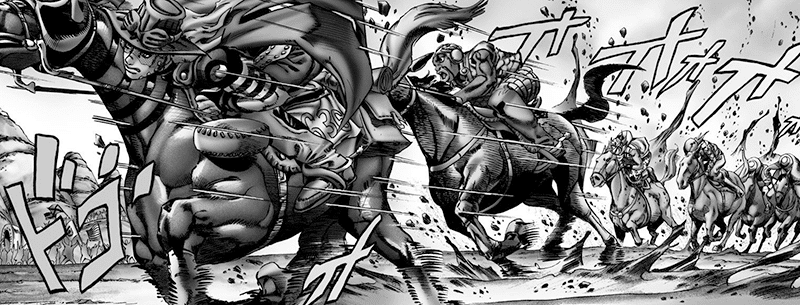
Steel Ball Run stands out for its perfect balance between kinetic action and emotional storytelling. The sprawling race format gives the narrative constant forward motion, while Araki’s imaginative Stand battles add layers of strategy and spectacle. His art reaches new heights: cinematic, expressive, and rich in detail, capturing both the harshness of the American frontier and the elegance of his evolving style.
By the end, Steel Ball Run delivers the perfect closure to its narrative arc. Yet even after finishing it, its emotional depth, creative audacity, and breathtaking art leave an unforgettable mark. For readers looking for one of the greatest completed manga ever drawn, Steel Ball Run is highly recommended.
Genres: Action, Adventure, Supernatural
Status: Completed (the JoJo’s Bizarre Adventure series is still ongoing)
5. Usogui
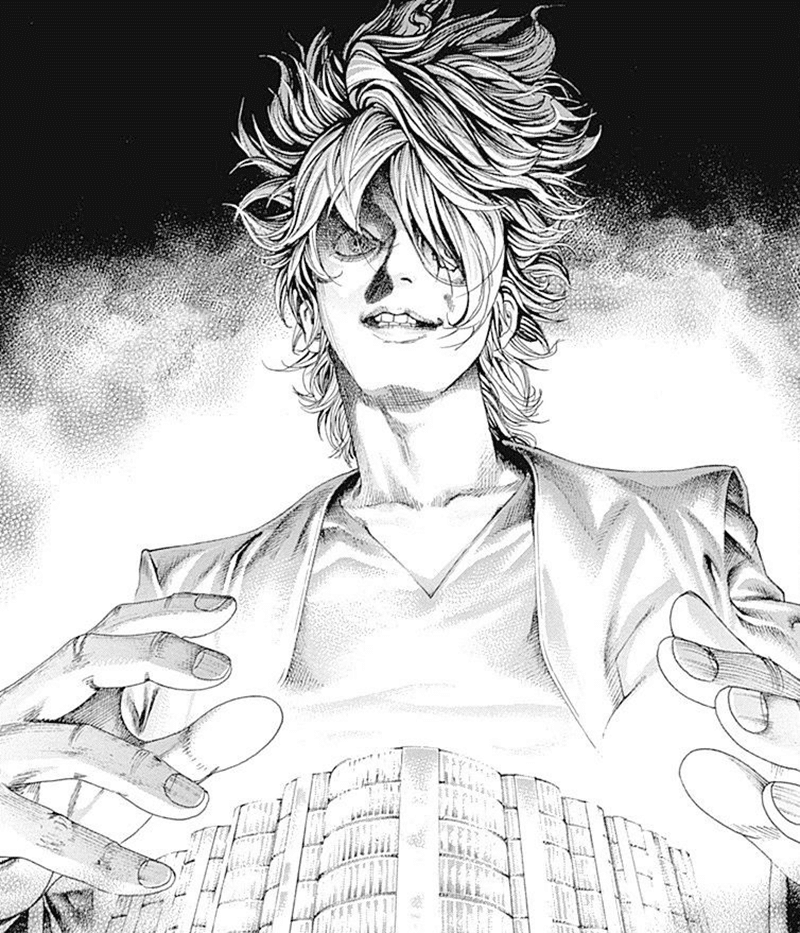
Toshio Sako’s Usogui stands among the most intricate and exhilarating completed manga ever made. It’s a psychological rivalry disguised as a gambling story, one that begins modestly but evolves into a breathtaking saga of intellect, deception and human willpower. By the end, it’s easy to see why so many readers consider it a hidden masterpiece and one of the best manga series of all time.
The story centers on Baku Madarame, nicknamed Usogui or The Lie Eater, a fearless gambler who thrives on games where deceit and manipulation are the weapons of choice. Every match he enters is sanctioned by Kagerou, a shadowy organization that enforces the outcome of each gamble, no matter how deadly the stakes. What begins as a series of bizarre contests gradually unfolds into a much bigger story.
At first, Usogui feels rough around the edges. The opening arc leans toward survival horror, but the series quickly transforms, with each new game introducing deeper logic, sharper twists, and dizzying reversals.
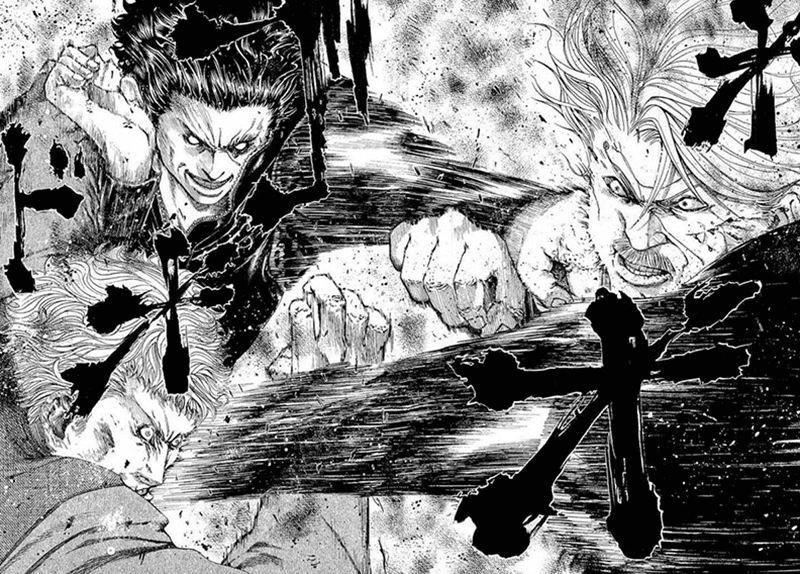
By the time the Tower of Karma arc arrives, Sako’s storytelling and artwork have reached full brilliance, outclassing almost all other weekly series. His once-gritty art becomes precise and kinetic, capable of capturing both cerebral tension and explosive emotion in a single panel.
Every character, from the enigmatic Baku to ruthless opponents such as Soichi Kimura and Vicent Lalo, feels larger than life.
At over 500 chapters, Usogui is a commitment, but one well worth it. Those who dive into it and stick to it after the first few arcs will learn why it stands as a definitive mind-game masterpiece. For readers who crave psychological warfare and perfectly constructed tension, Usogui is a must-read from start to finish.
Genres: Psychological, Gambling, Thriller
Status: Completed (Seinen)
4. Ultra Heaven
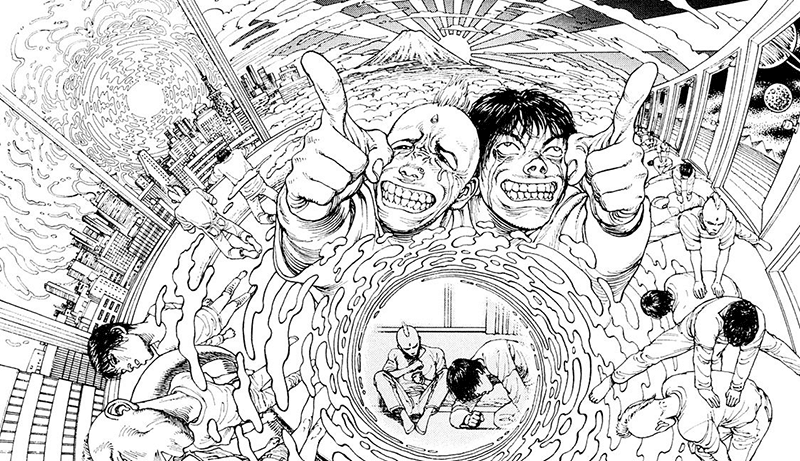
Keiichi Koike’s Ultra Heaven is a hallucinatory plunge into the depths of human consciousness and perception. It’s part cyberpunk dystopia, part psychedelic meditation, and entirely unlike anything else in the medium. For readers drawn to surreal and mind-bending stories, Ultra Heaven stands as one of the best completed manga ever made.
The story takes place in a grim future where emotions are no longer organic. People inject joy, buy enlightenment, and medicate despair. Kabu, a small-time dealer and heavy user of synthetic feelings, lives at the edge of this chemically numbed world. When a mysterious stranger offers him a new drug called Ultra Heaven, Kabu is thrust into an ever-escalating trip that blurs the line between hallucination, awakening, and insanity.
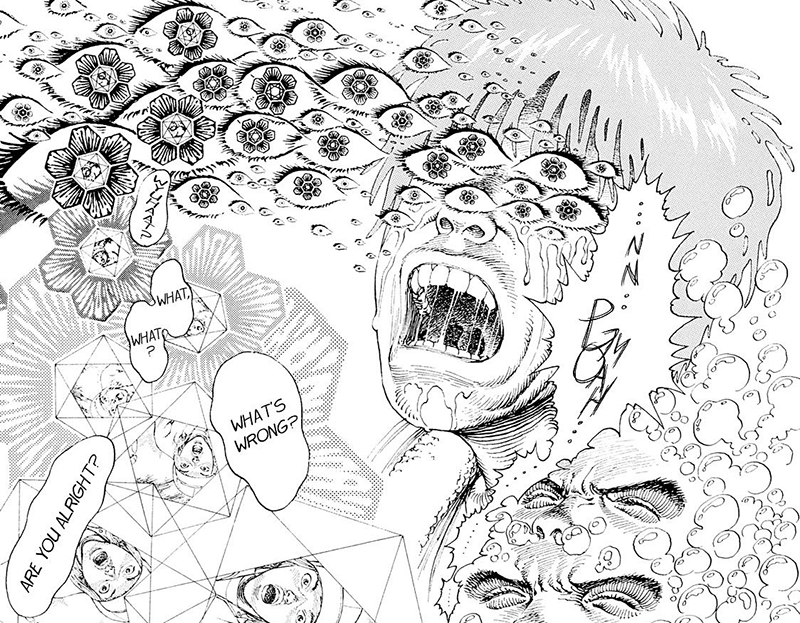
Koike’s art is nothing short of transcendent. His depiction of Kabu’s inner and outer worlds collide in impossible ways. We see buildings ripple, faces dissolve, and panels melt into spiraling fractals of ink. During Kabu’s altered state, the manga abandons linear structure entirely, becoming a living hallucination where the reader experiences his descent firsthand. It’s visual experimentation at its highest form, yet every stroke feels intentional and alive.
At only three lengthy chapters, Ultra Heaven feels brief, but it achieves a rare completion, one rooted not in plot resolution but transformation. It leaves you, similar to Kabu, changed, questioning what reality means once perception itself becomes fluid.
Ultra Heaven remains one of the most ambitious, immersive, and visually daring works ever printed. It’s a must-read for anyone interested in the outermost limits of manga and the mind.
Genres: Psychological, Sci-Fi, Experimental
Status: Completed (Seinen)
3. Uzumaki
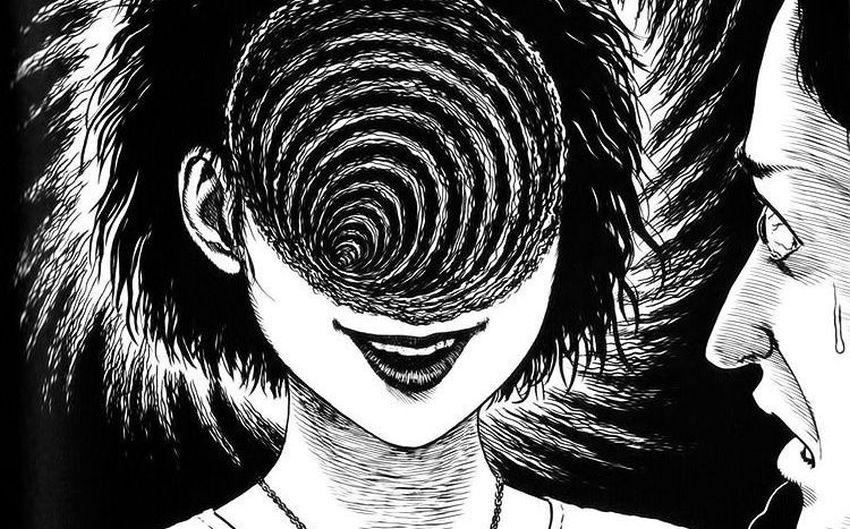
Junji Ito’s Uzumaki stands at the pinnacle of horror, a completed manga that defines the genre. It’s a hypnotic descent into madness, obsession and cosmic dread. Even among Ito’s many works, this three-volume masterpiece stands as his crowning achievement, and one of the greatest manga ever made.
Set in Kurouzu-cho, a small coastal town, the story follows Kirie Goshima and her boyfriend Shuuichi as their home slowly falls under the curse of the spiral. At first, it’s just an eerie symbol appearing in shells and whirlpools. But soon, the pattern begins to infect everything. People twist into contorted shapes, winds form endless vortices, and the town itself bends under its weight. There is no monster here, no villain, only the spiral, an idea that consumes reality itself.
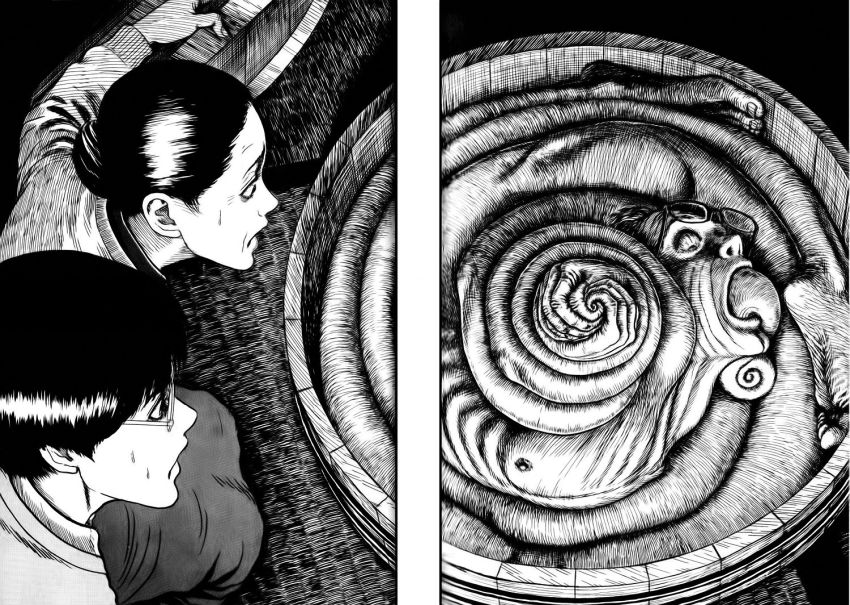
What makes Uzumaki so unforgettable is how Ito transforms a simple shape into pure dread. Each chapter reimagines the spiral in new horrifying ways, fusing body horror, psychological breakdown, and cosmic terror into visual nightmares. His meticulous linework and grotesque imagination bring the impossible to life. Every new chapter feels somehow sicker and more disturbing than those that came before.
While Uzumaki is strongest in its first two, more episodic volumes, its ending doesn’t disappoint. It feels both apocalyptic and inevitable, giving the story a haunting sense of cosmic finality, awe, and beauty.
For readers who are looking for one of the scariest and most disturbing completed manga ever created, Uzumaki is a must-read. It’s a masterpiece of spiraling dread that will stay with you long after you read its final page.
Genres: Horror, Supernatural, Mystery, Cosmic Horror
Status: Completed (Seinen)
2. Blame!
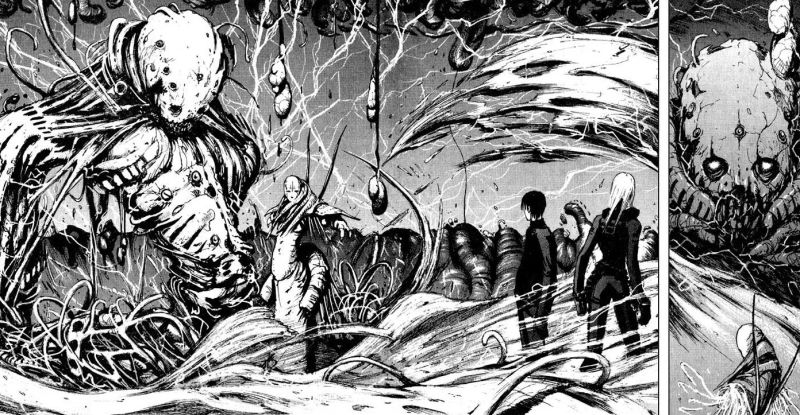
Tsutomu Nihei’s Blame! is a monumental work of science-fiction and cyberpunk, a completed manga that pushes the boundaries of visual storytelling and worldbuilding to their absolute limit. It’s not just one of the best cyberpunk manga ever created, but a singular artistic achievement that reshaped how silence, architecture, and scale could tell a story.
The manga follows Killy, a stoic wanderer navigating the endless labyrinth known simply as The City. His mission is to find a human with the elusive Net Terminal Gene. What sounds like a simple journey at first soon turns into something mythic. The City is a machine-world gone mad, a sprawling megastructure that expands without logic or end, one that has swallowed not only Earth, but large parts of the Solar System. Killy’s small figure, often dwarfed by Nihei’s impossibly vast backdrops, becomes the perfect vessel for exploring isolation and persistence in a world that’s already forgotten humanity.
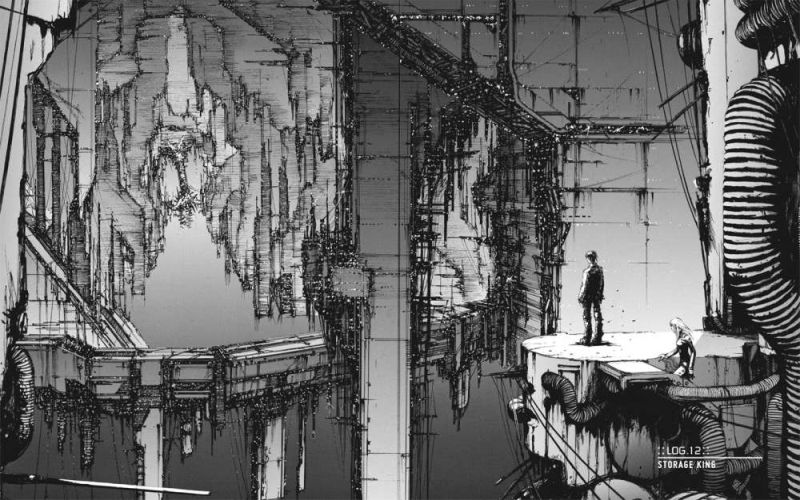
Blame! communicates all this through space and texture instead of words. Dialogue is scarce, and explanation even rarer. Instead, the story unfolds through imagery. We bear witness to biomechanical creatures, human enclaves, and bursts of massive destruction that feel almost cataclysmic. Nihei’s art is both terrifying and transcendent, often fusing cyberpunk horror with gothic beauty.
Blame! is a manga that’s hard to understand, and to really grasp its final pages, multiple re-reads might be necessary. But beyond that, Blame! is a piece of art, and finishing it feels more like having witnessed something vast and incomprehensible. Few series manage to capture such haunting feelings of both loneliness and awe.
For readers who crave atmosphere, scale, and visual storytelling at its peak, Blame! remains an unmissable masterpiece, not just of the science-fiction or cyberpunk genre, but of manga itself.
Genres: Sci-Fi, Cyberpunk, Horror
Status: Completed (Seinen)
1. Blade of the Immortal
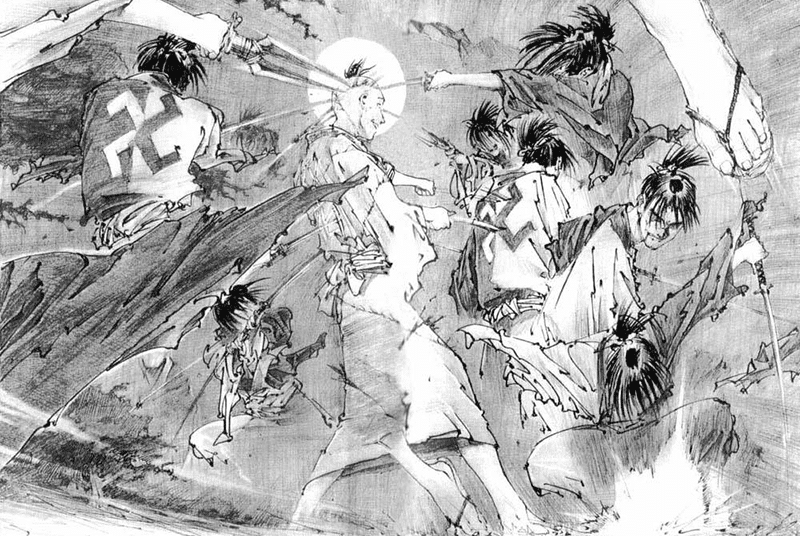
Hiroaki Samura’s Blade of the Immortal stands as one of the best completed manga ever created. It’s a brutal, beautiful epic that transforms samurai revenge story into a deeply human and character-driven narrative. Since it’s long been completed, you can now enjoy this unrelenting masterpiece from start to finish.
The story follows Manji, a jaded swordsman cursed with immortality after slaughtering a hundred men. To lift the curse, he must now kill a thousand wicked souls. His journey intertwines with Rin Asano, a young girl seeking revenge on the Itto-ryu, a renegade sword school that destroyed her family. What begins as a classic tale of revenge slowly unfolds into something much bigger.
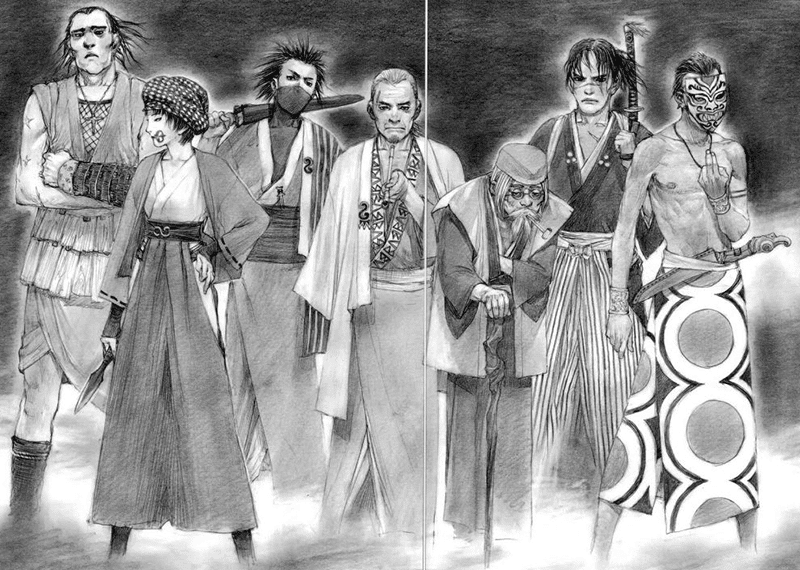
What makes Blade of the Immortal extraordinary is its character work. Its main cast, from the stoic Manji to the idealistic yet ruthless Kagehisa Anotsu, feels not only alive but fully realized. Even secondary characters like Maki, Magatsu, Hyakurin, and the sadistic Shira, all carry their own philosophies and traumas. There are no heroes here, only people driven by their own pain and conviction.
Samura’s art matches his storytelling: raw, elegant, and kinetic. His sword fights are brutal and chaotic, yet among the most fluid, gripping and best choreographed in the entire medium. The dialogue, infused with modern grit, gives the period setting an edge rarely seen in historical manga.
Blade of the Immortal is one of the greatest manga ever created, a masterpiece of character writing, style, and existential reflection. It’s a must-read for anyone who loves samurai stories, complex morality, or deeply layered characters.
Genres: Historical, Action, Drama, Revenge
Status: Completed (Seinen)
